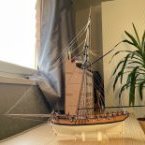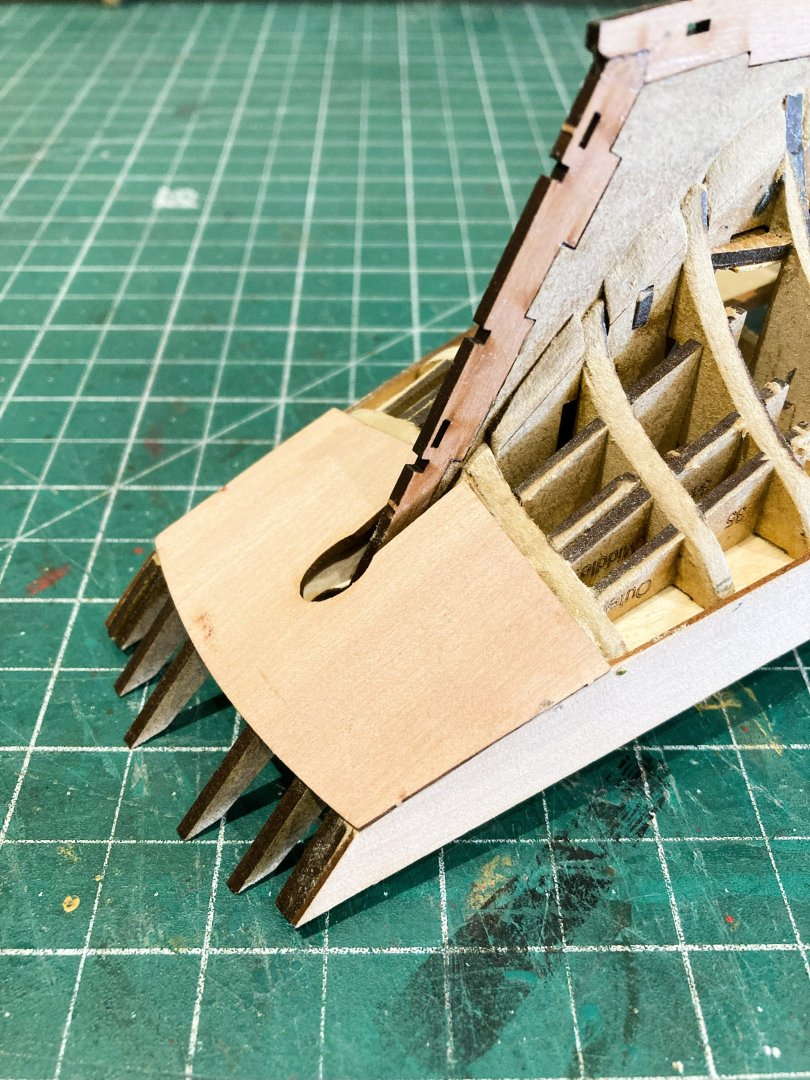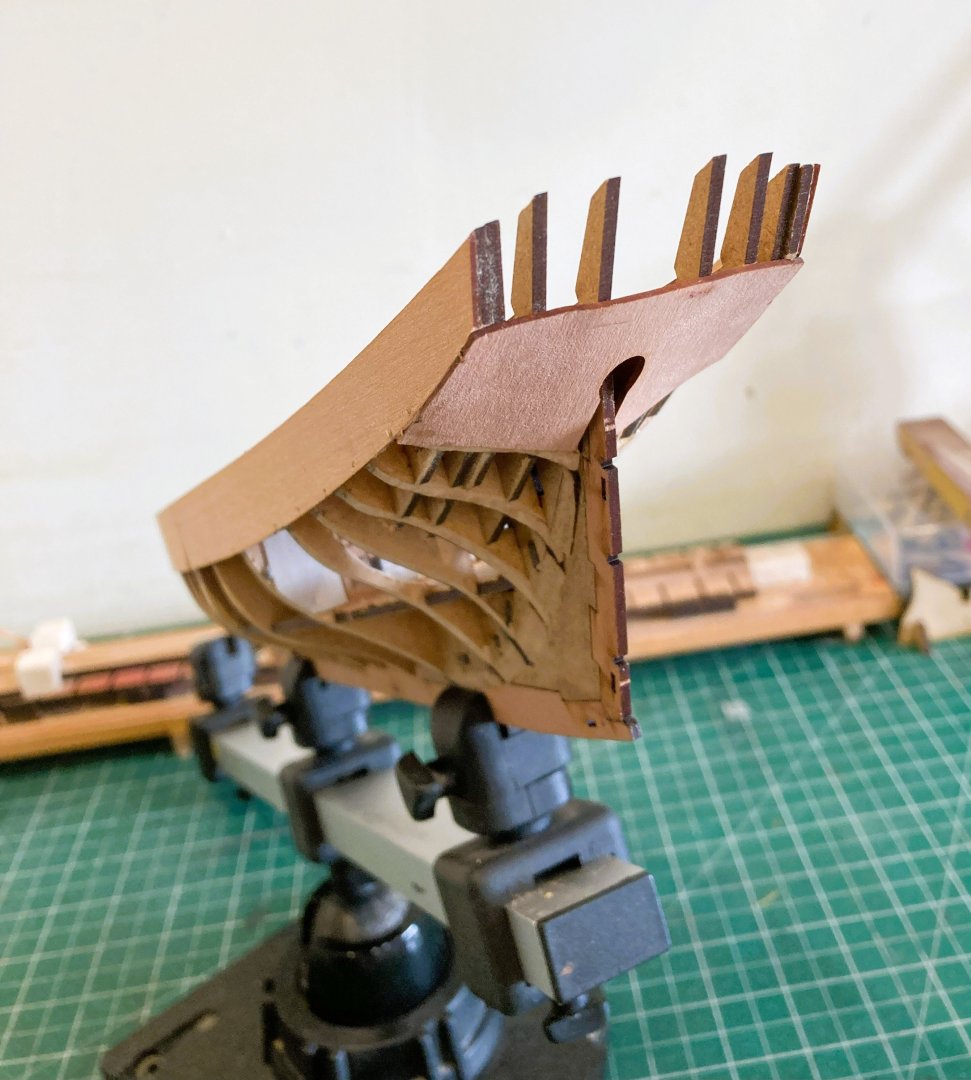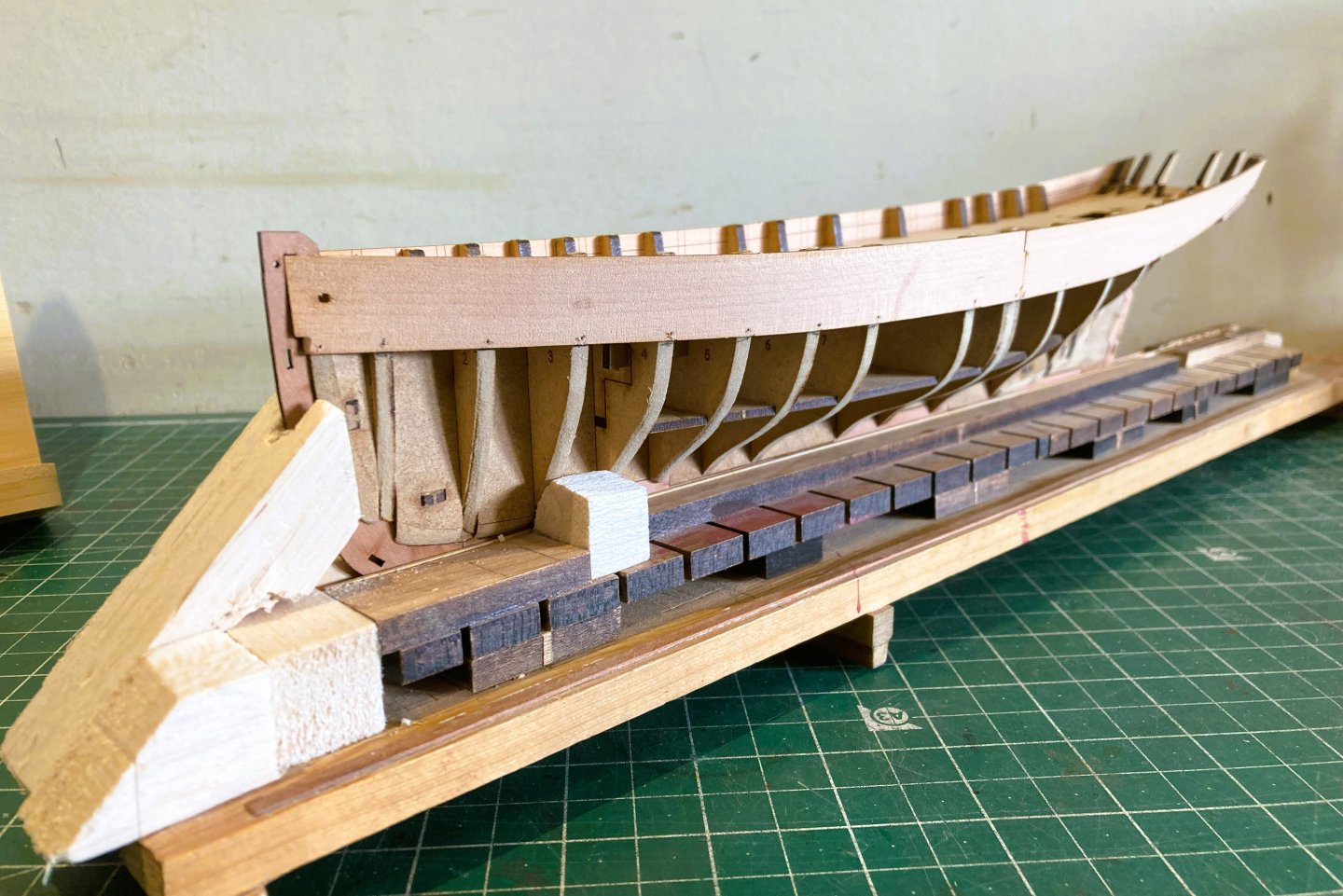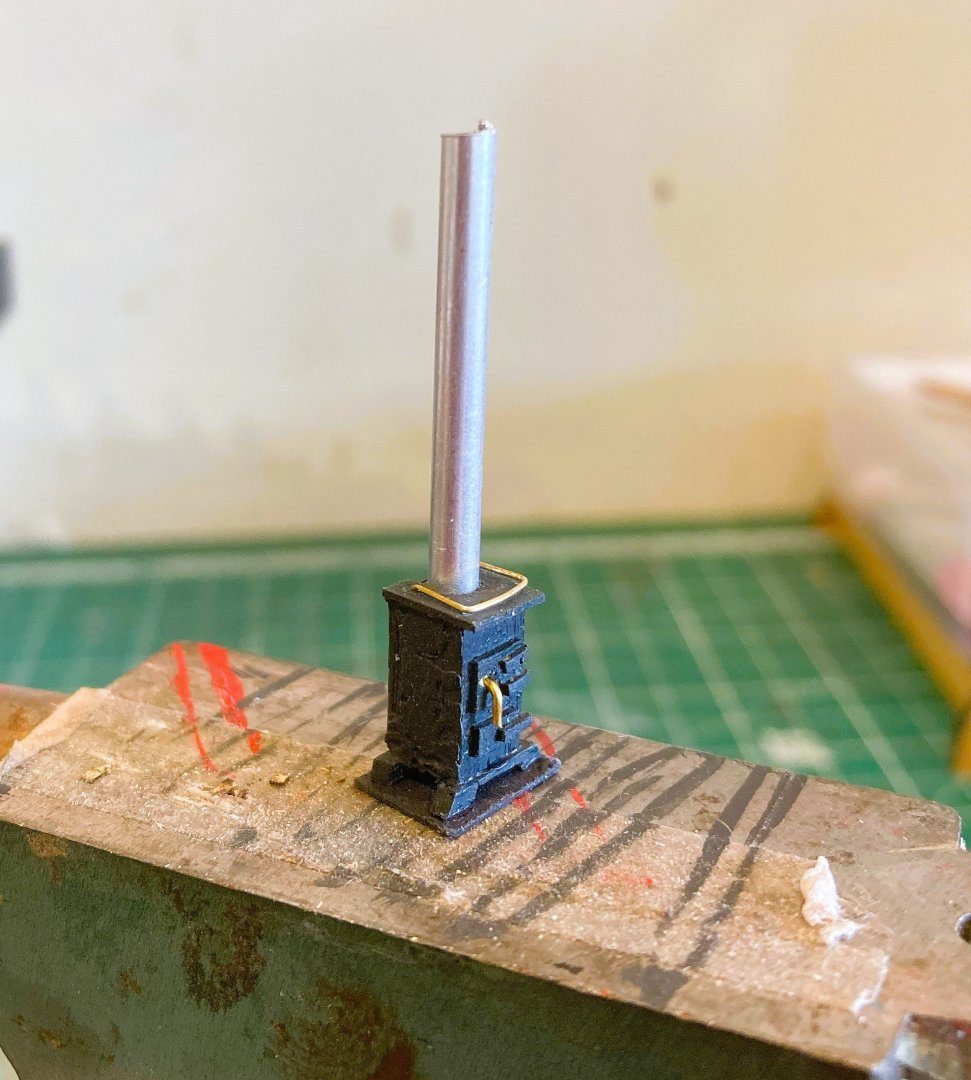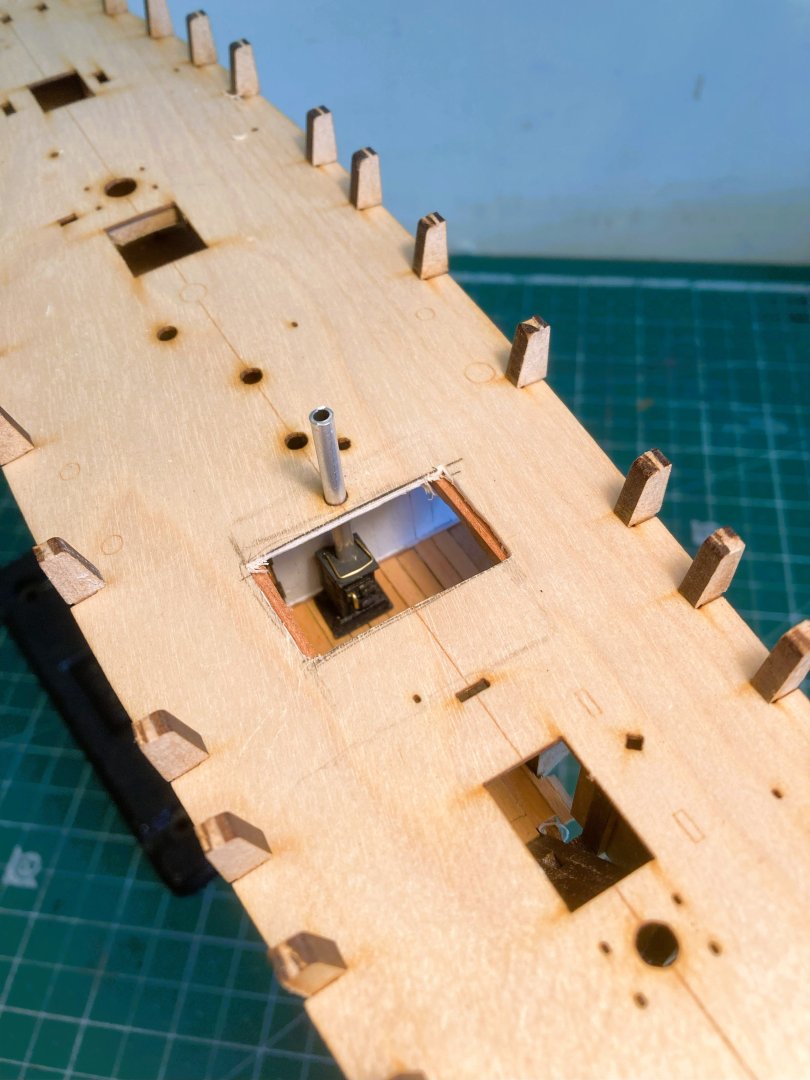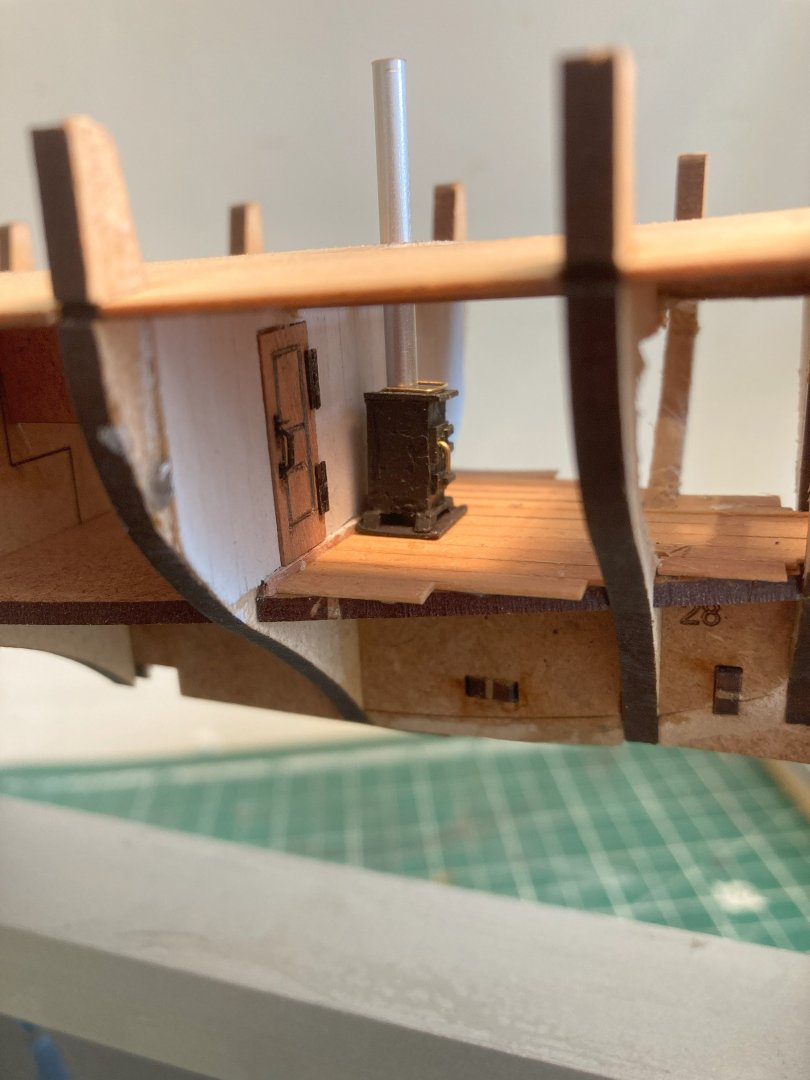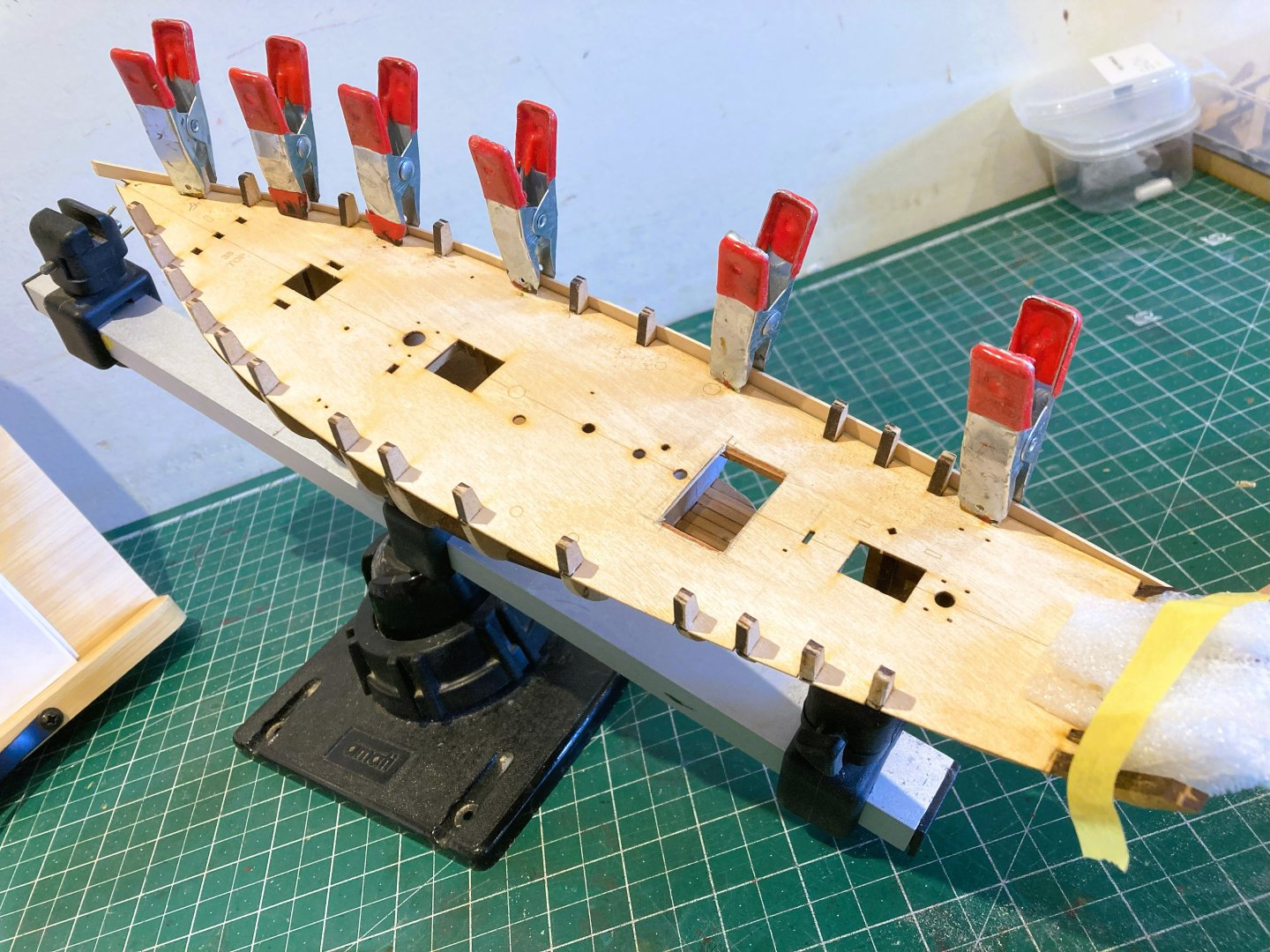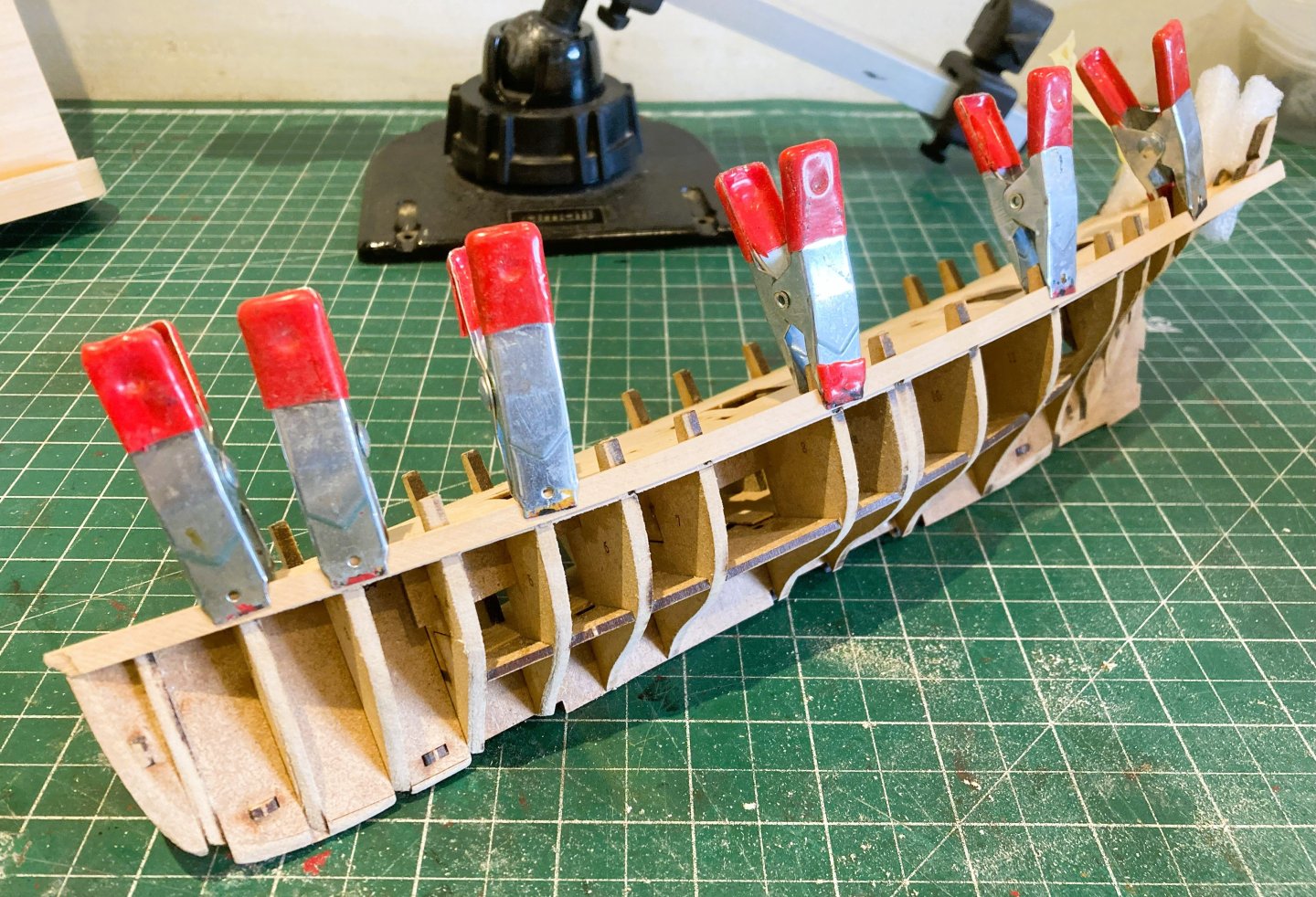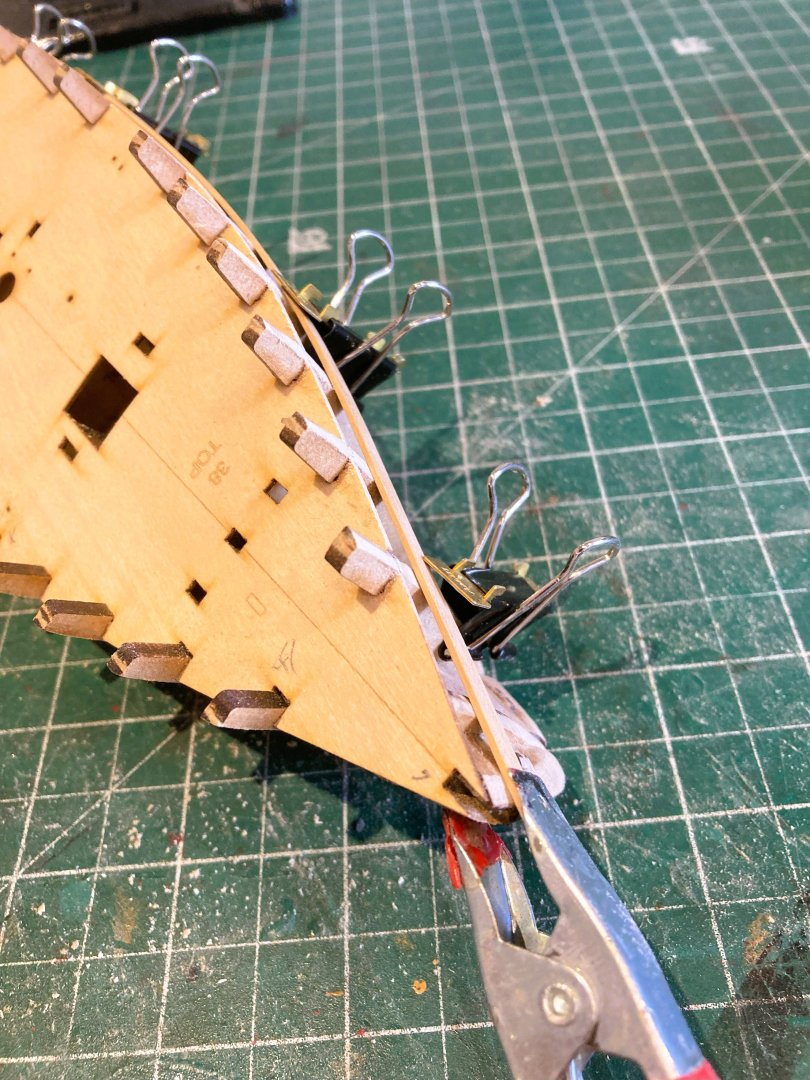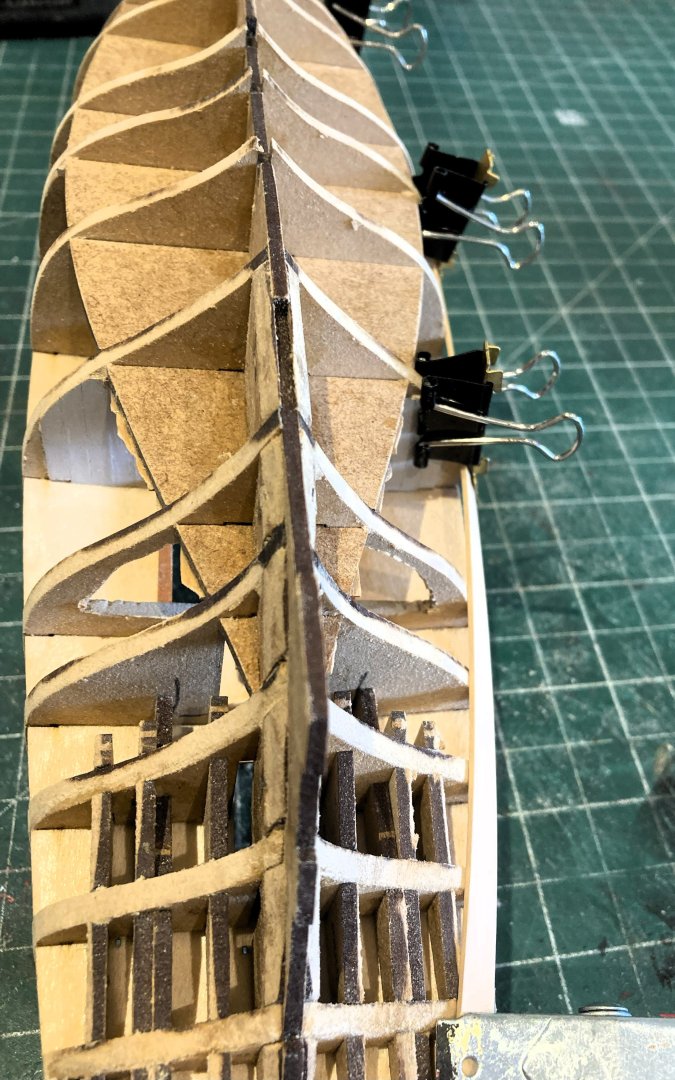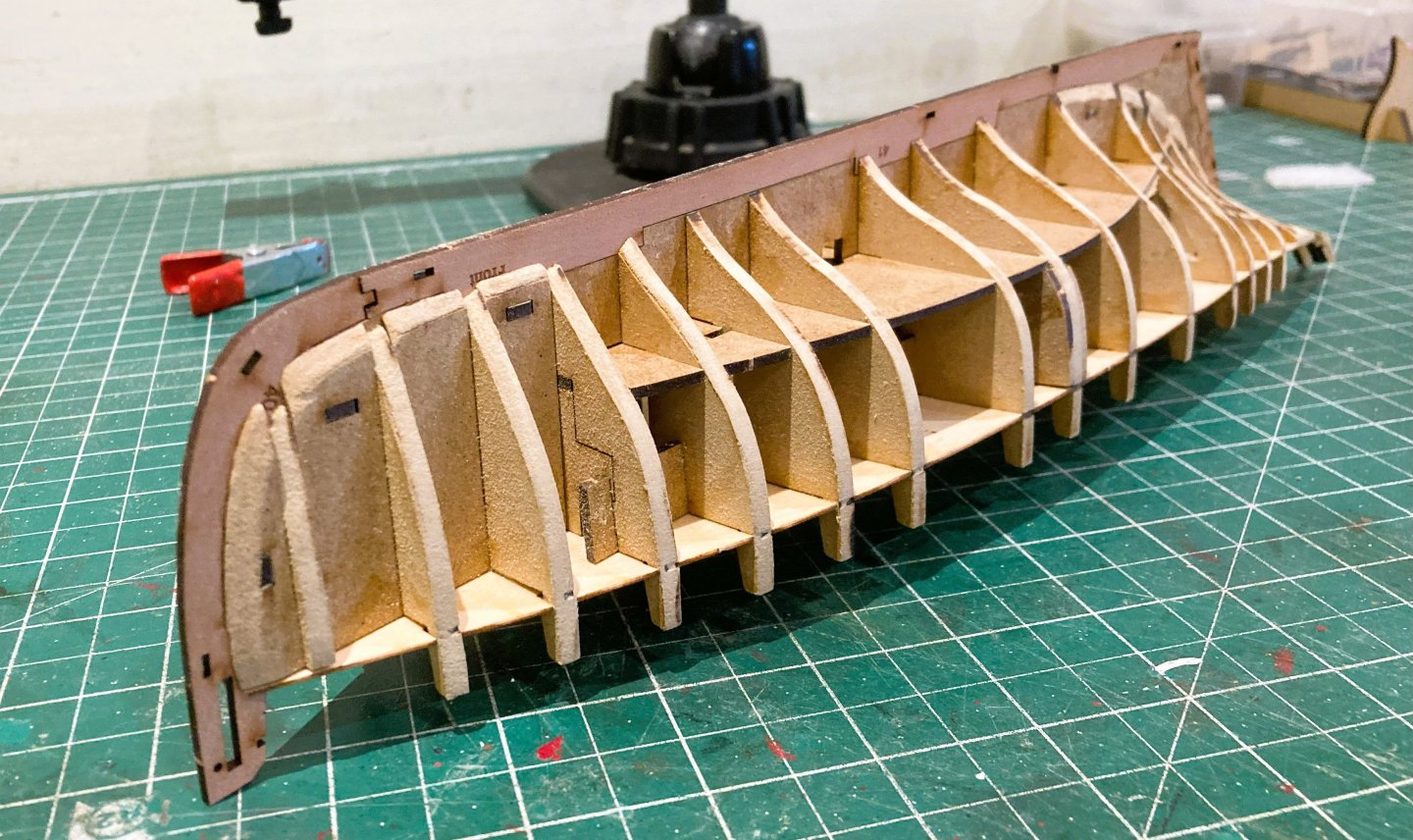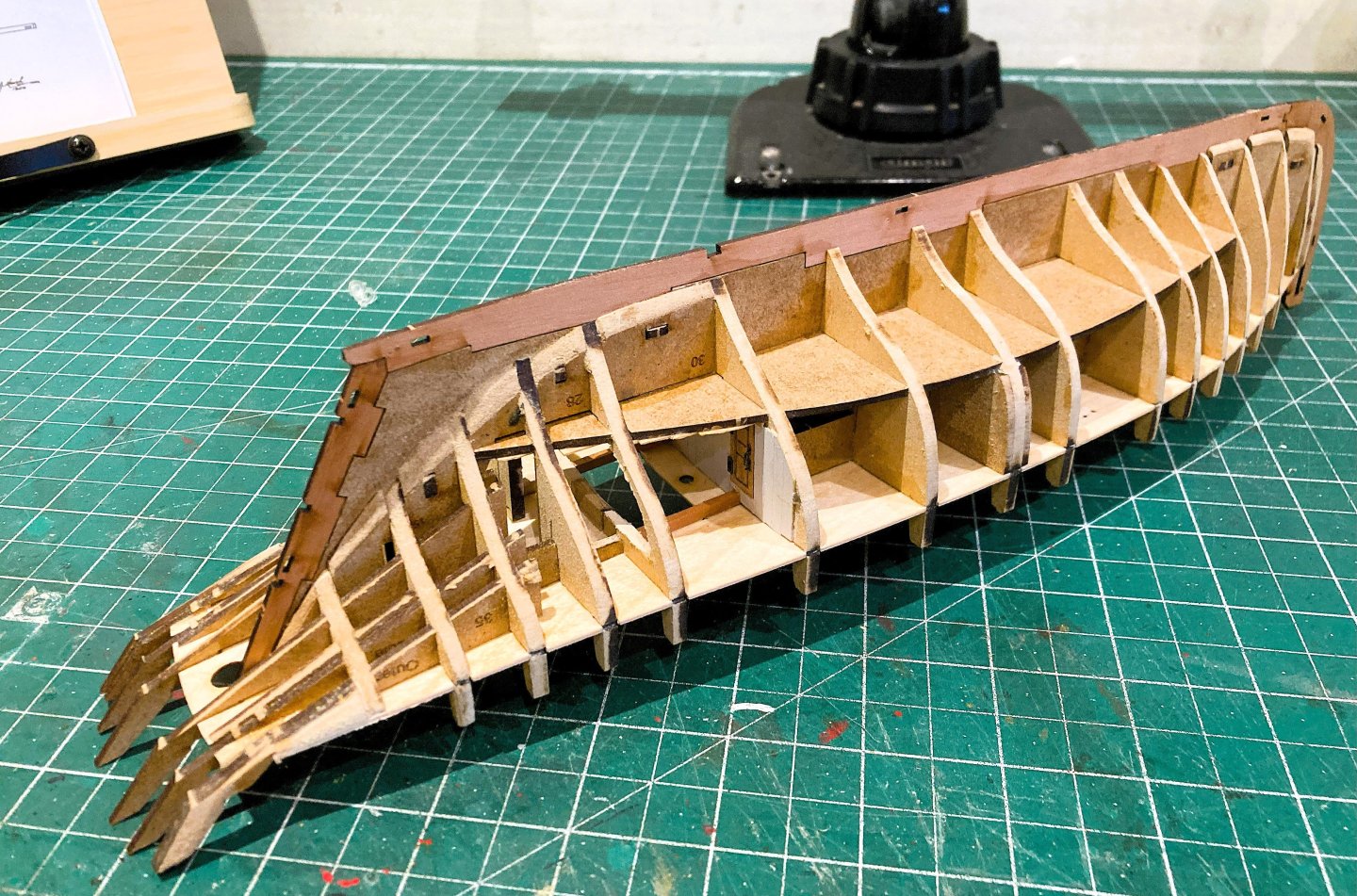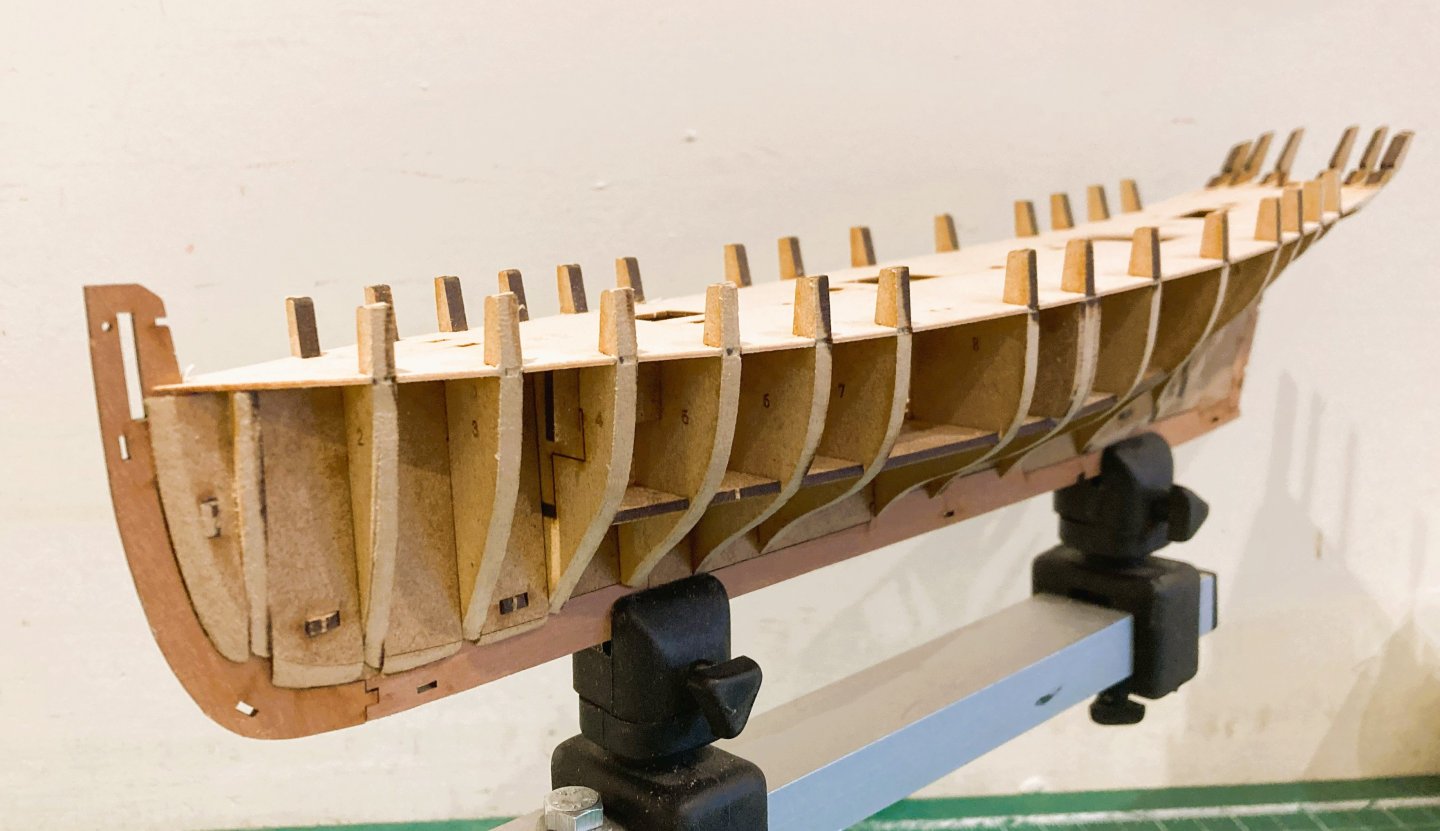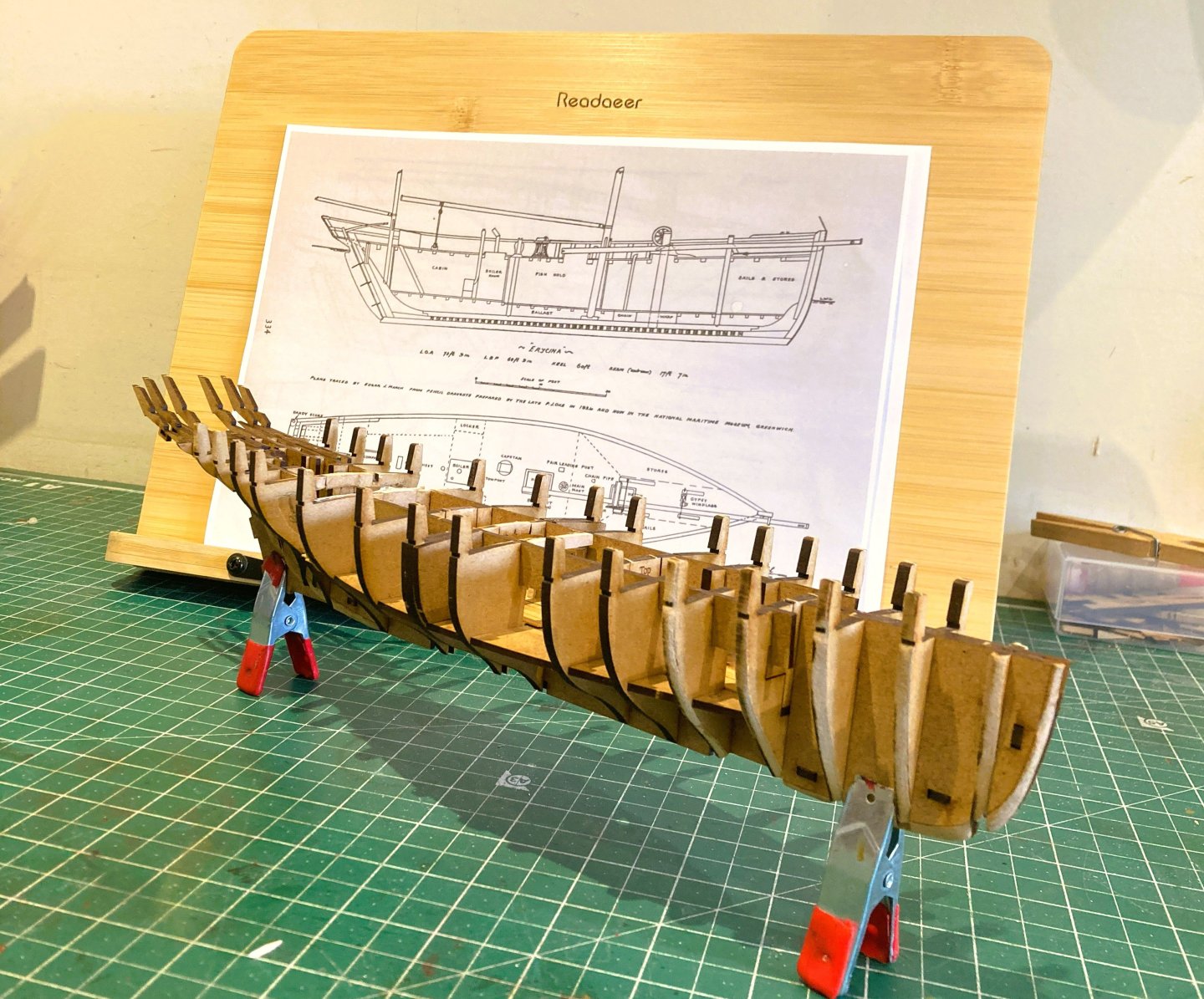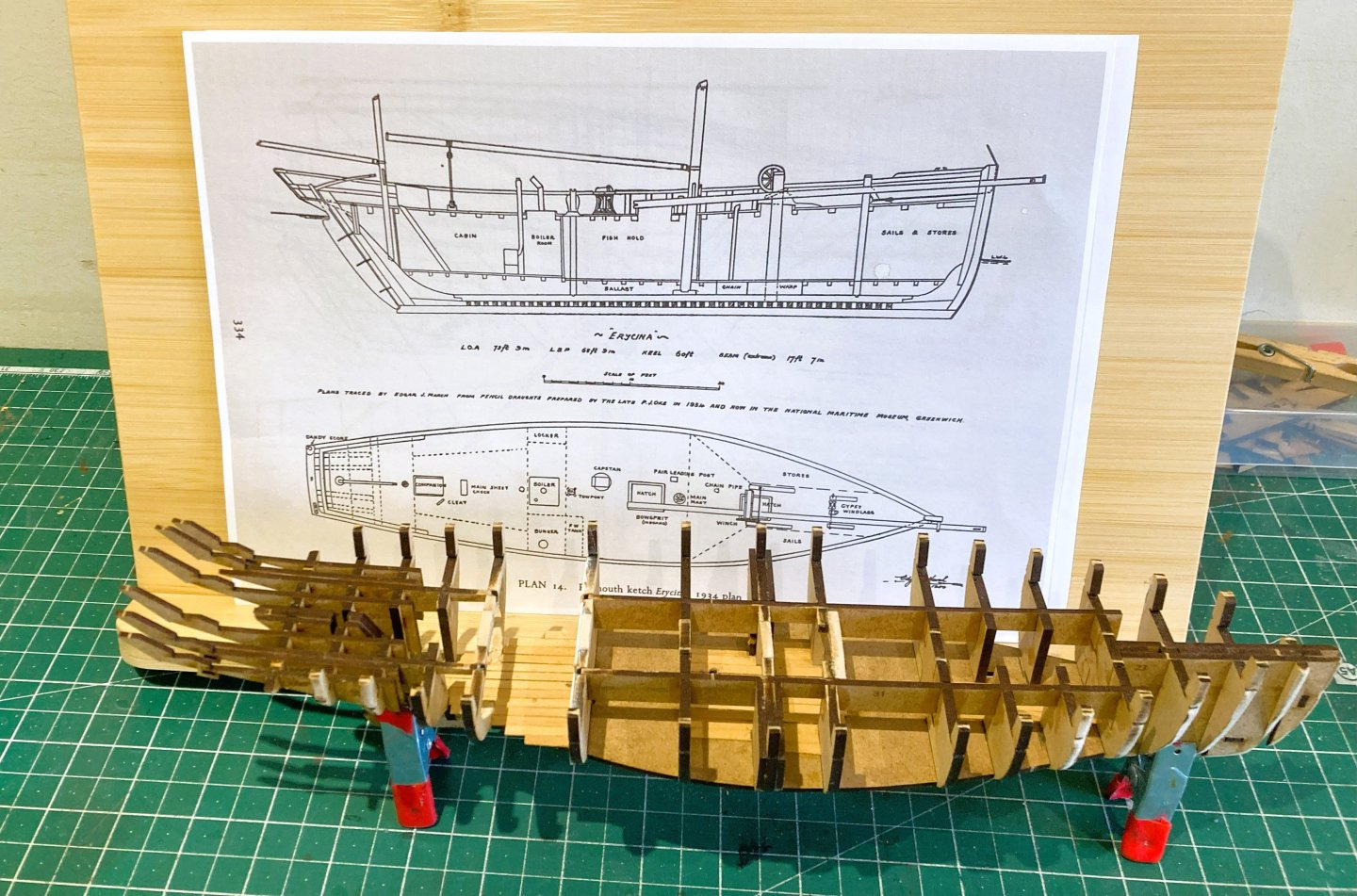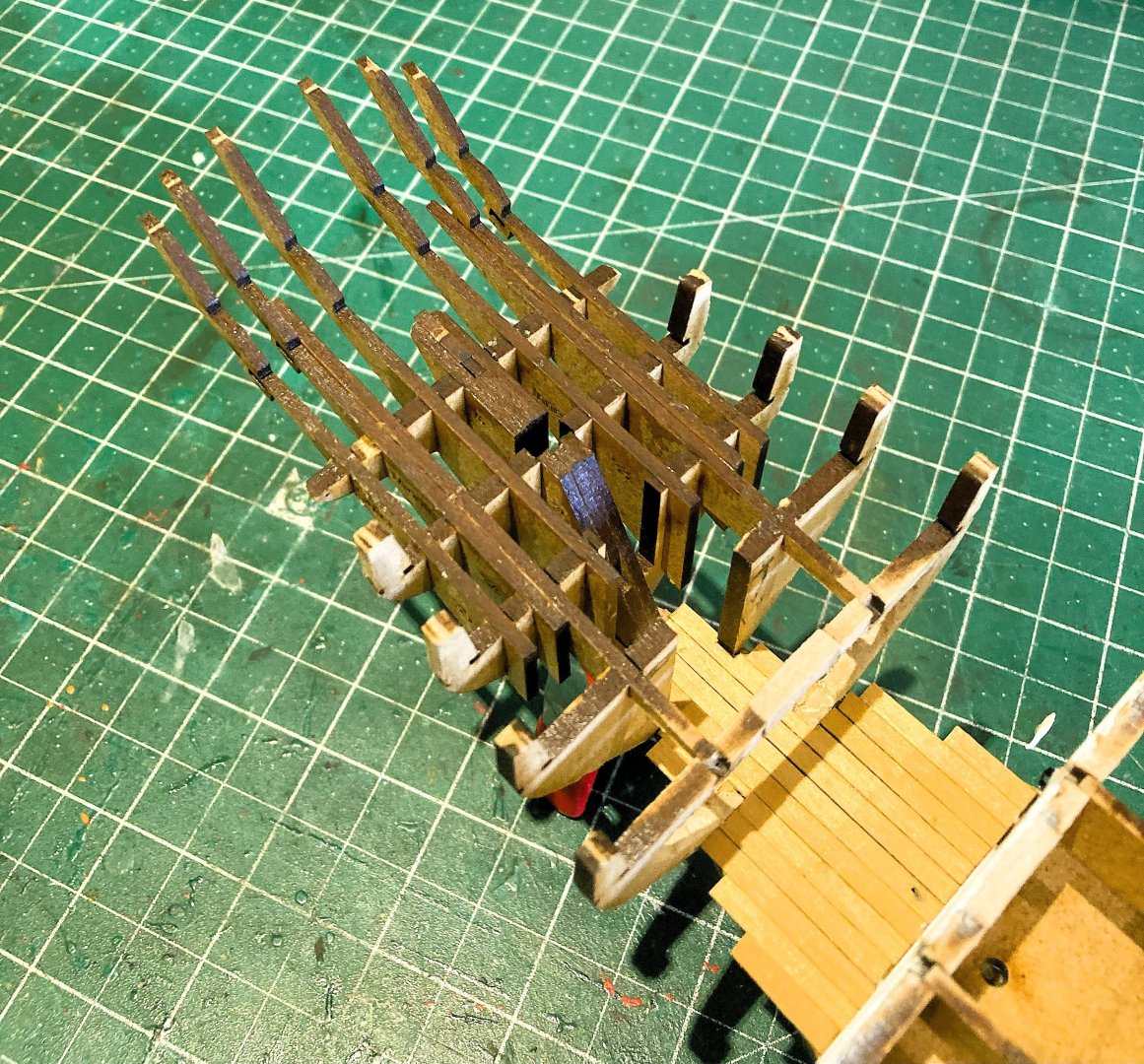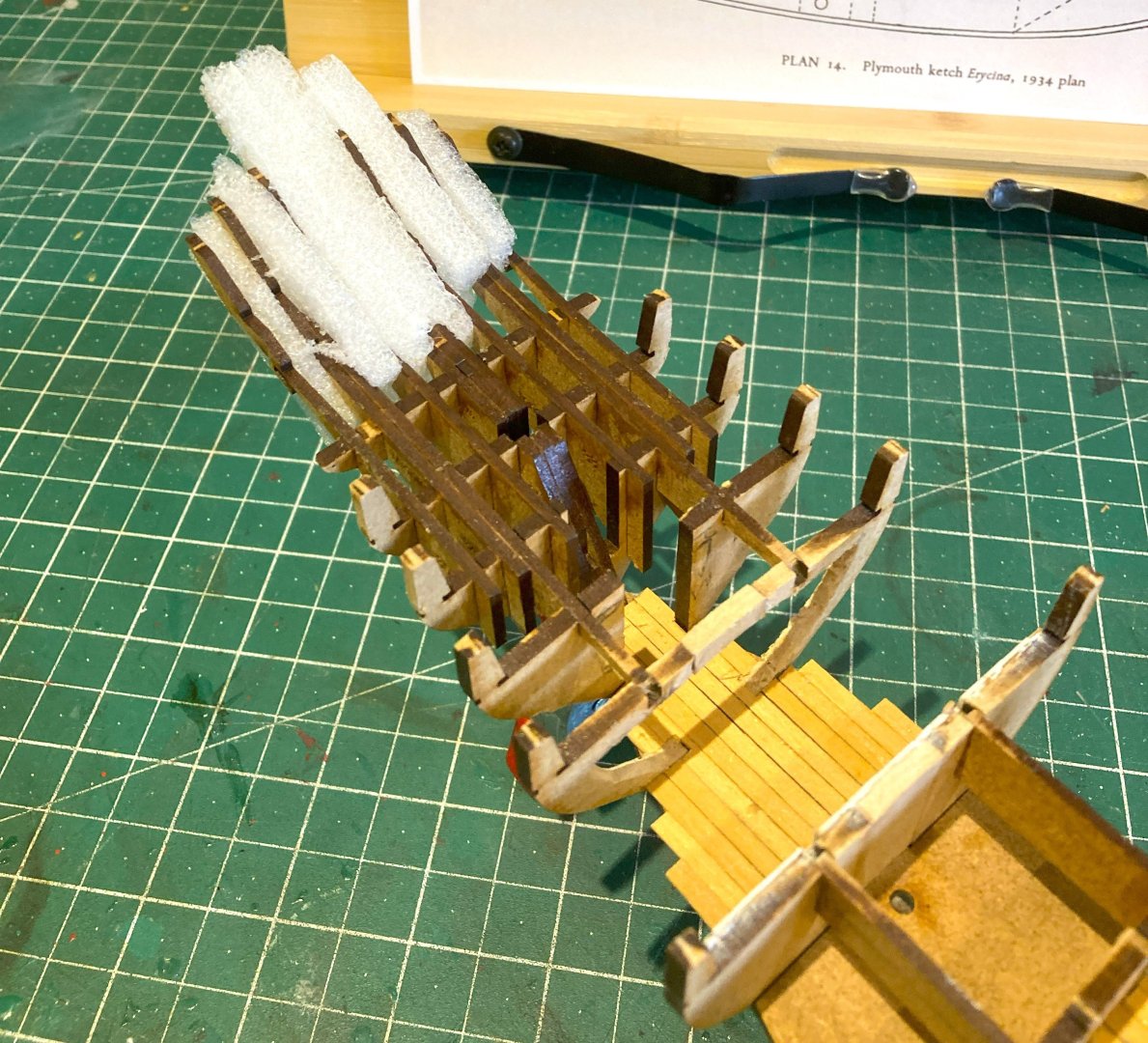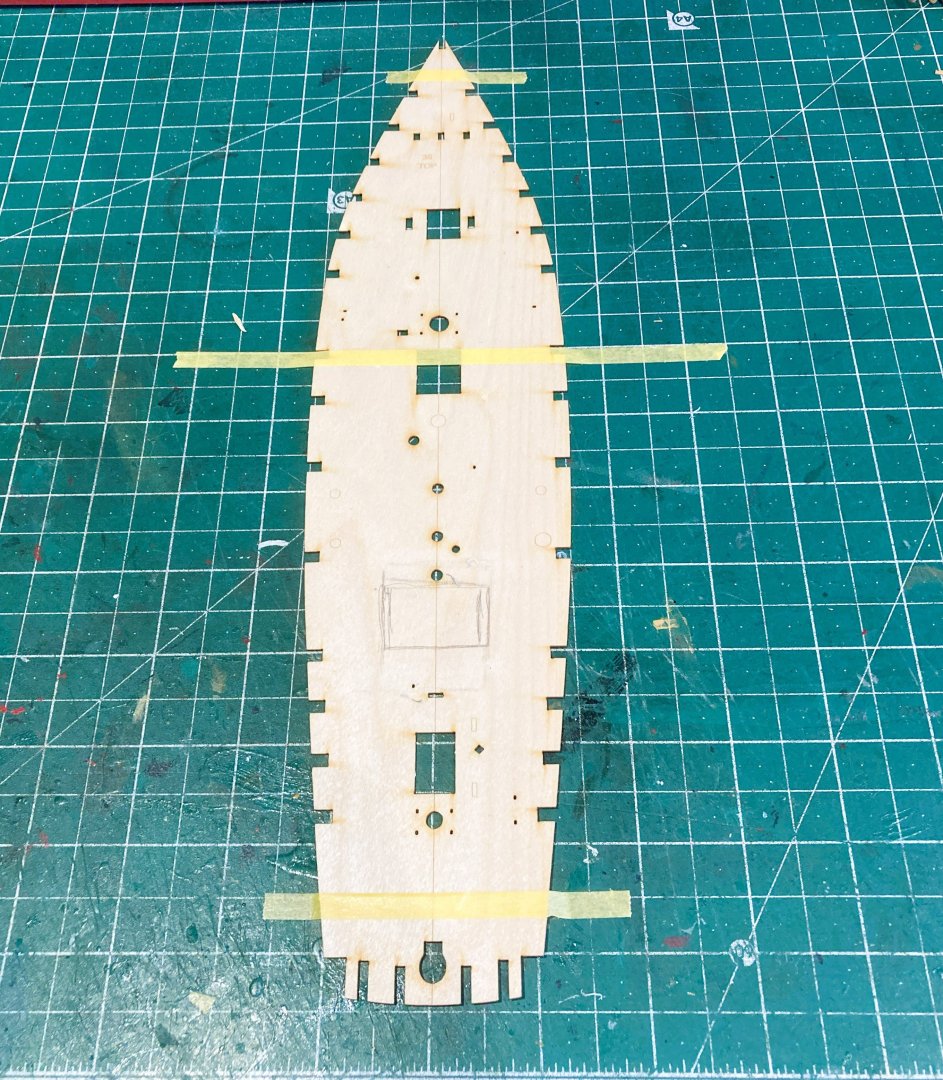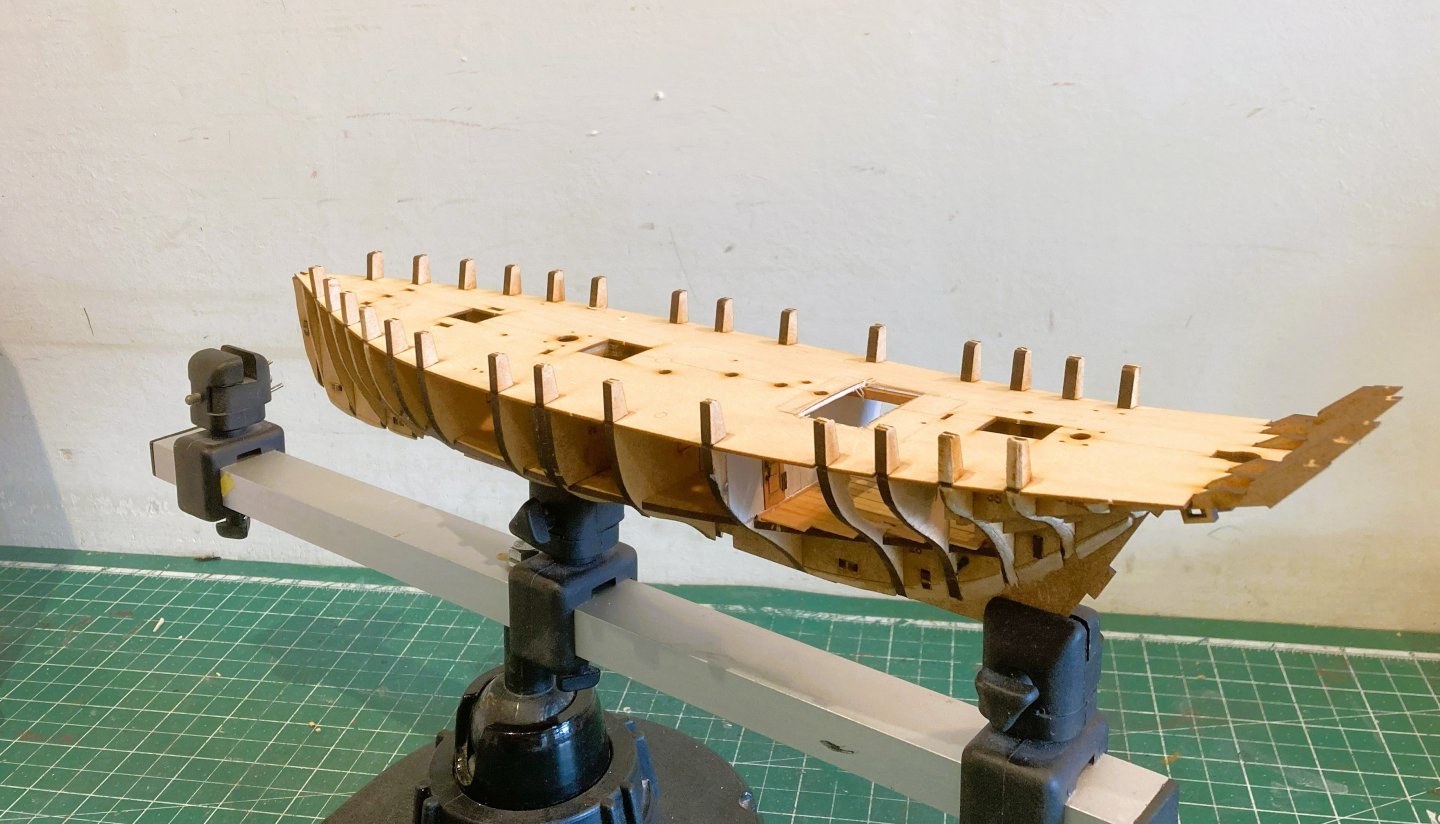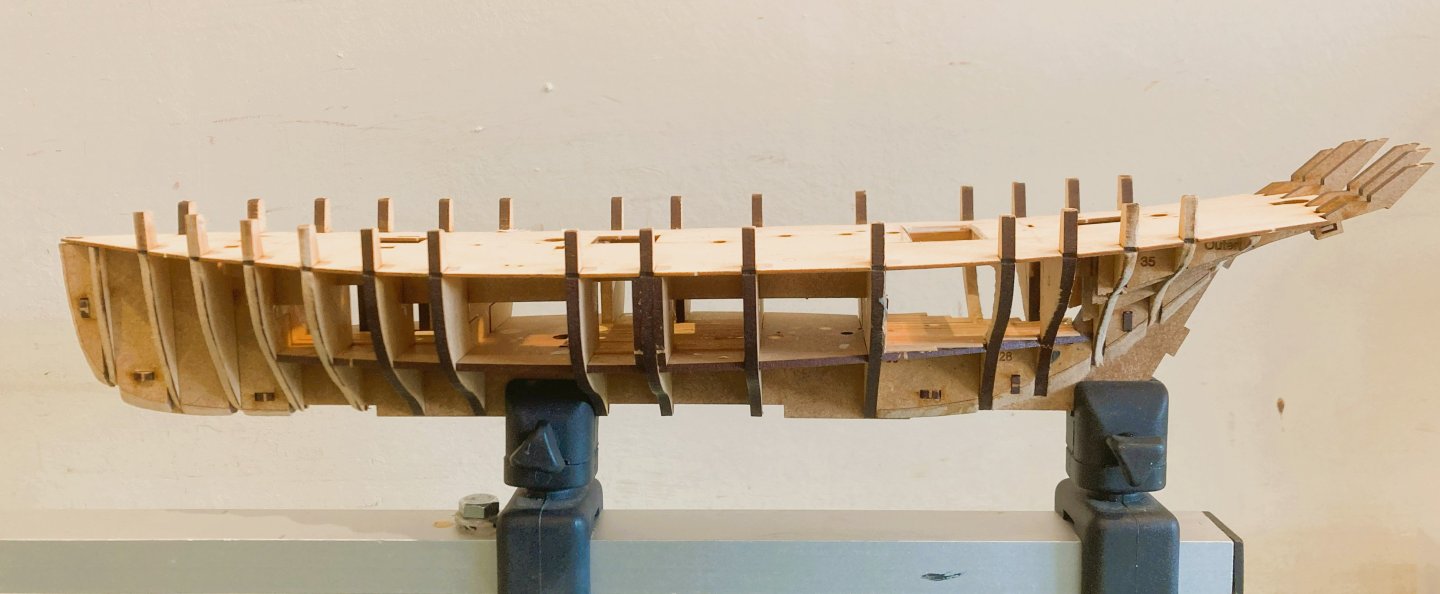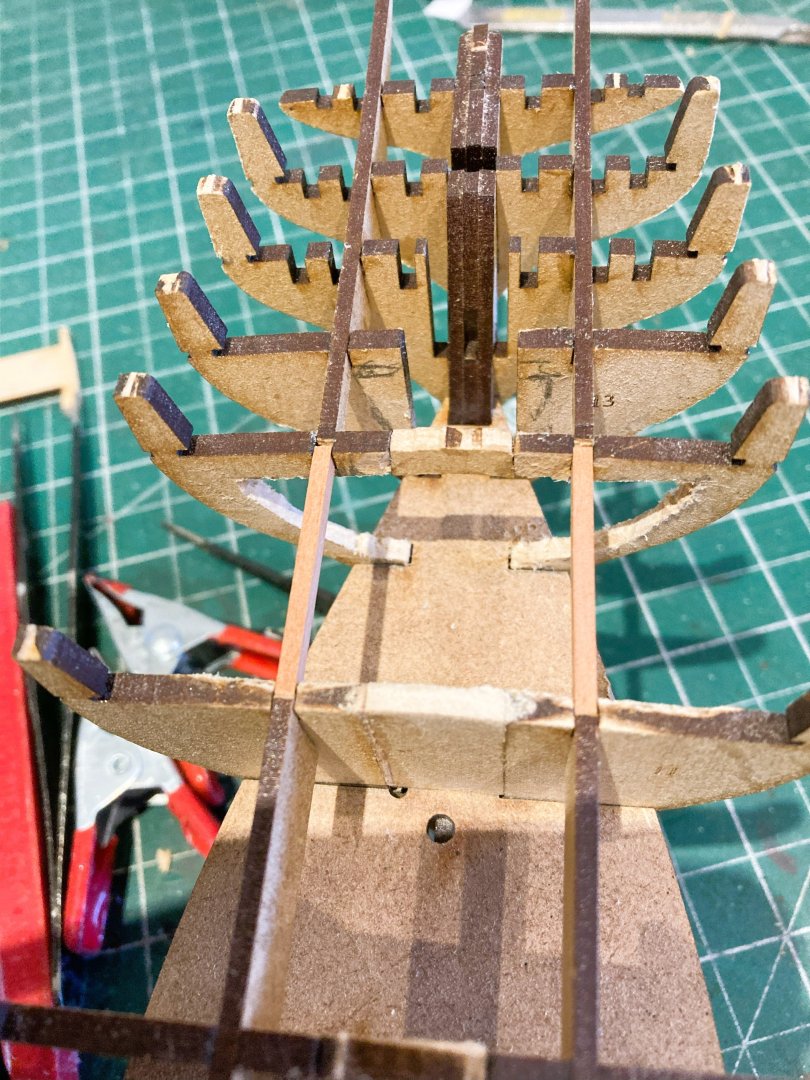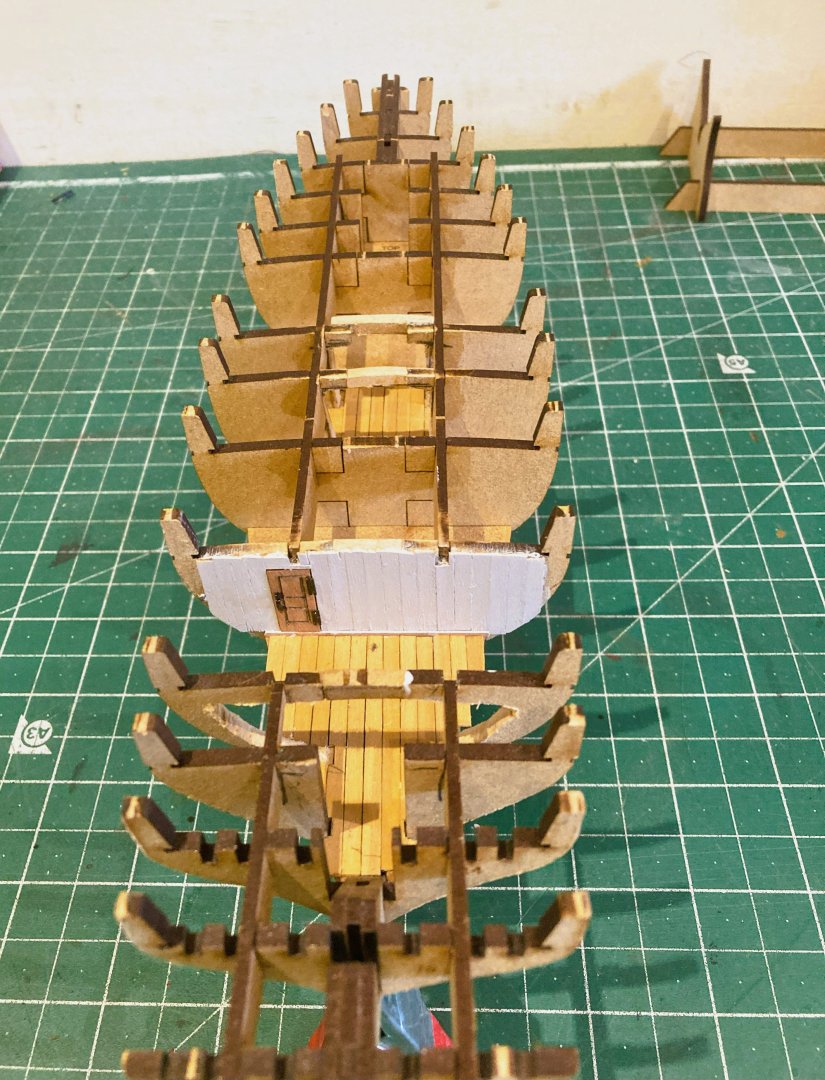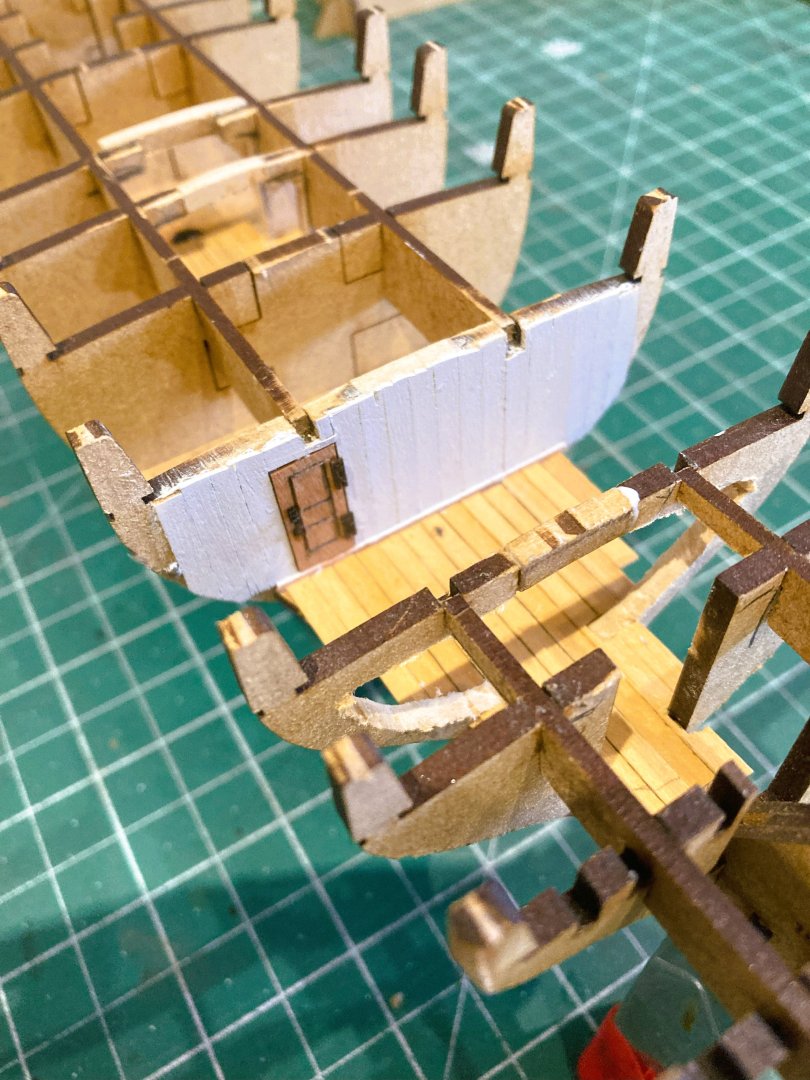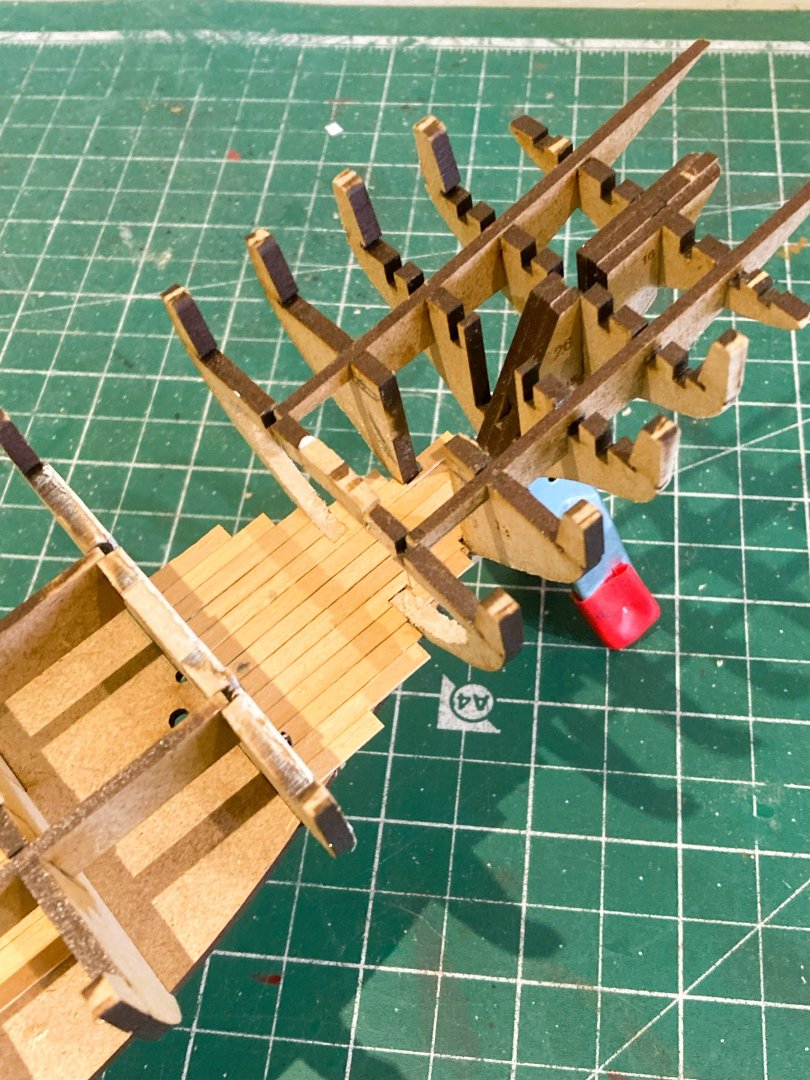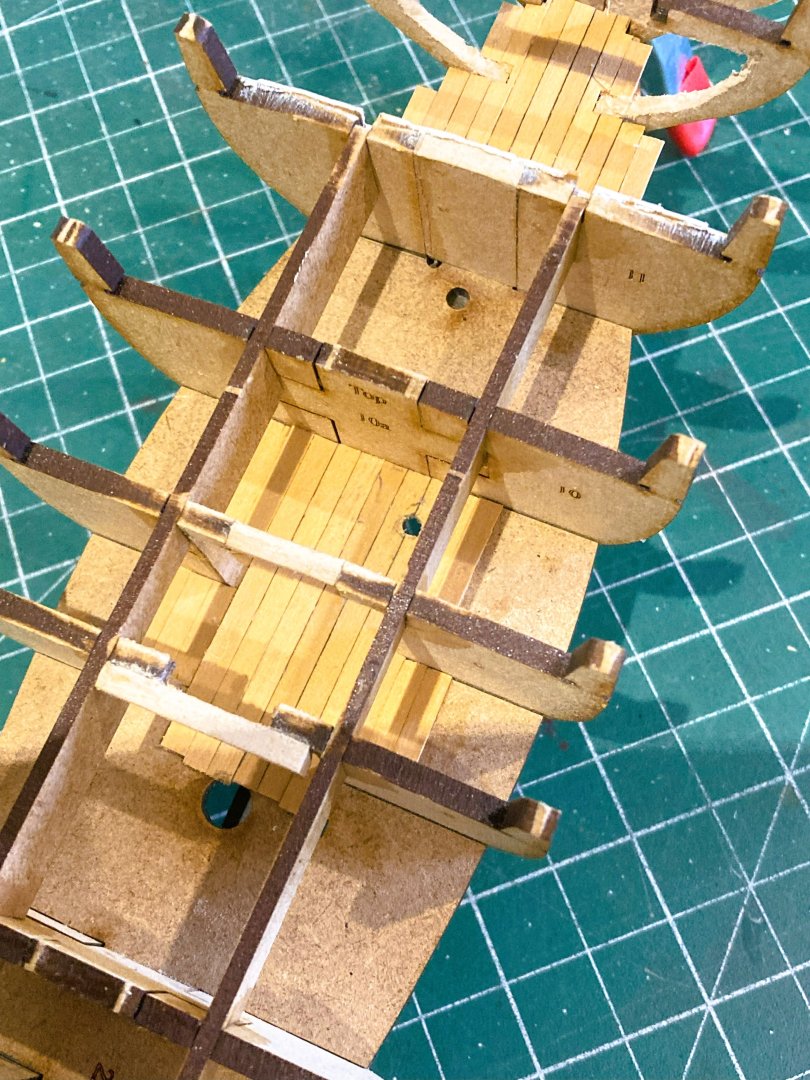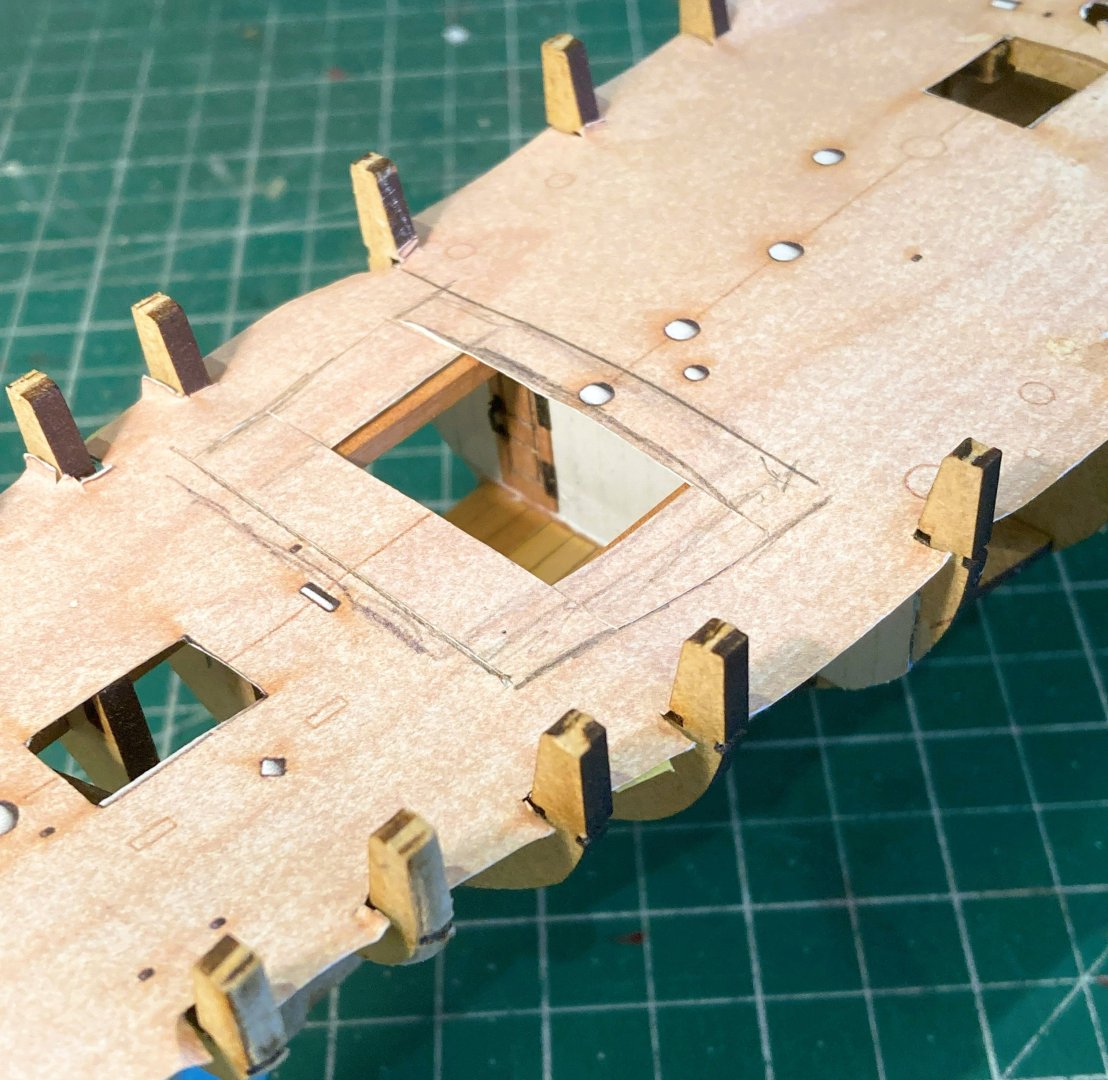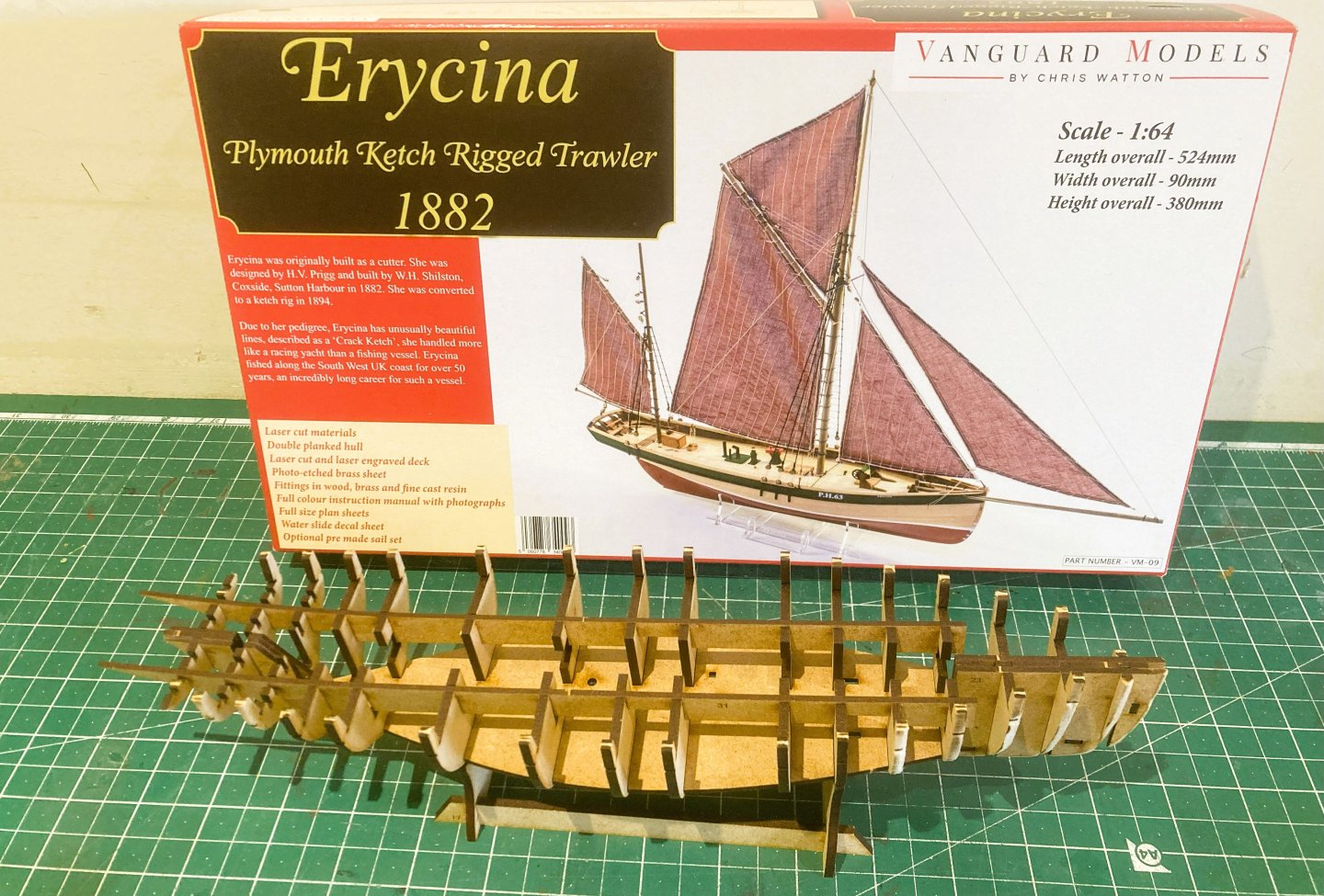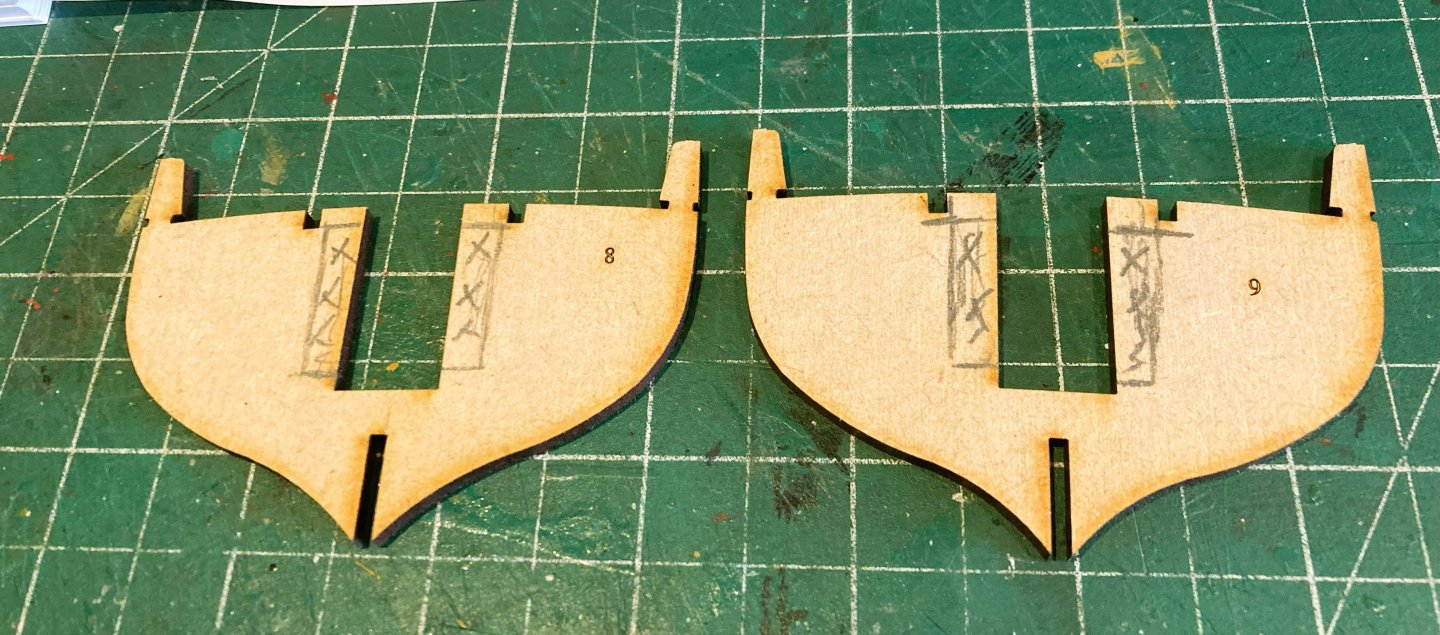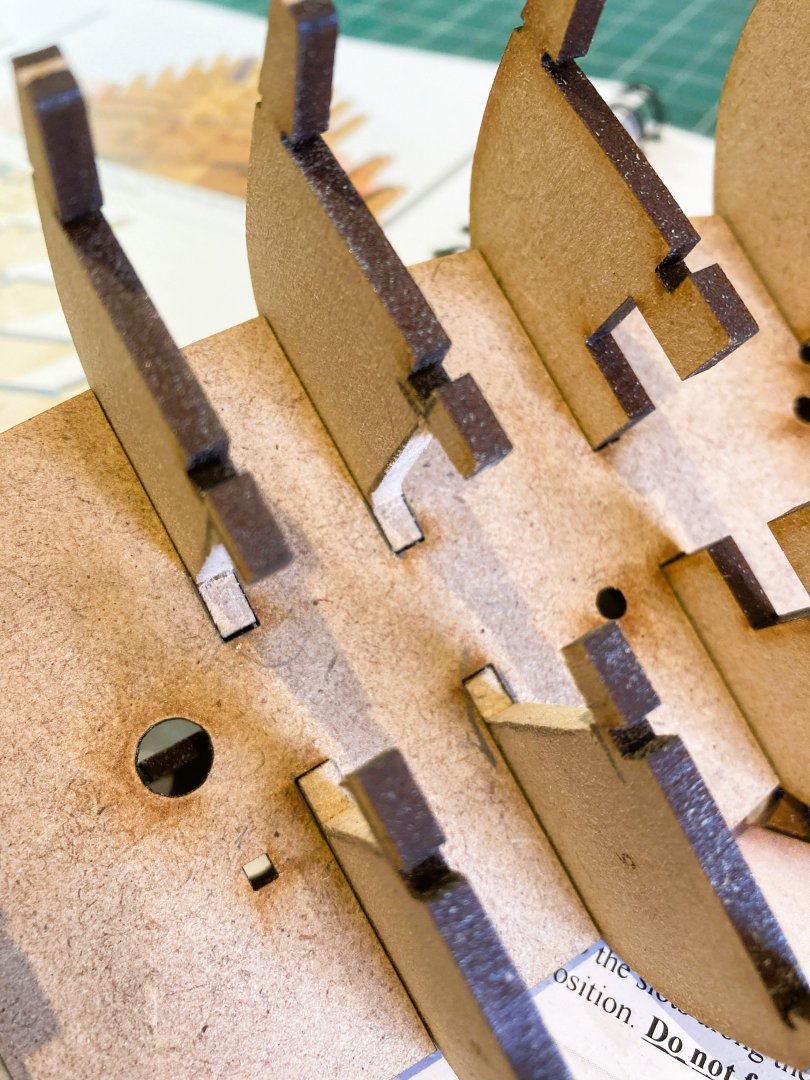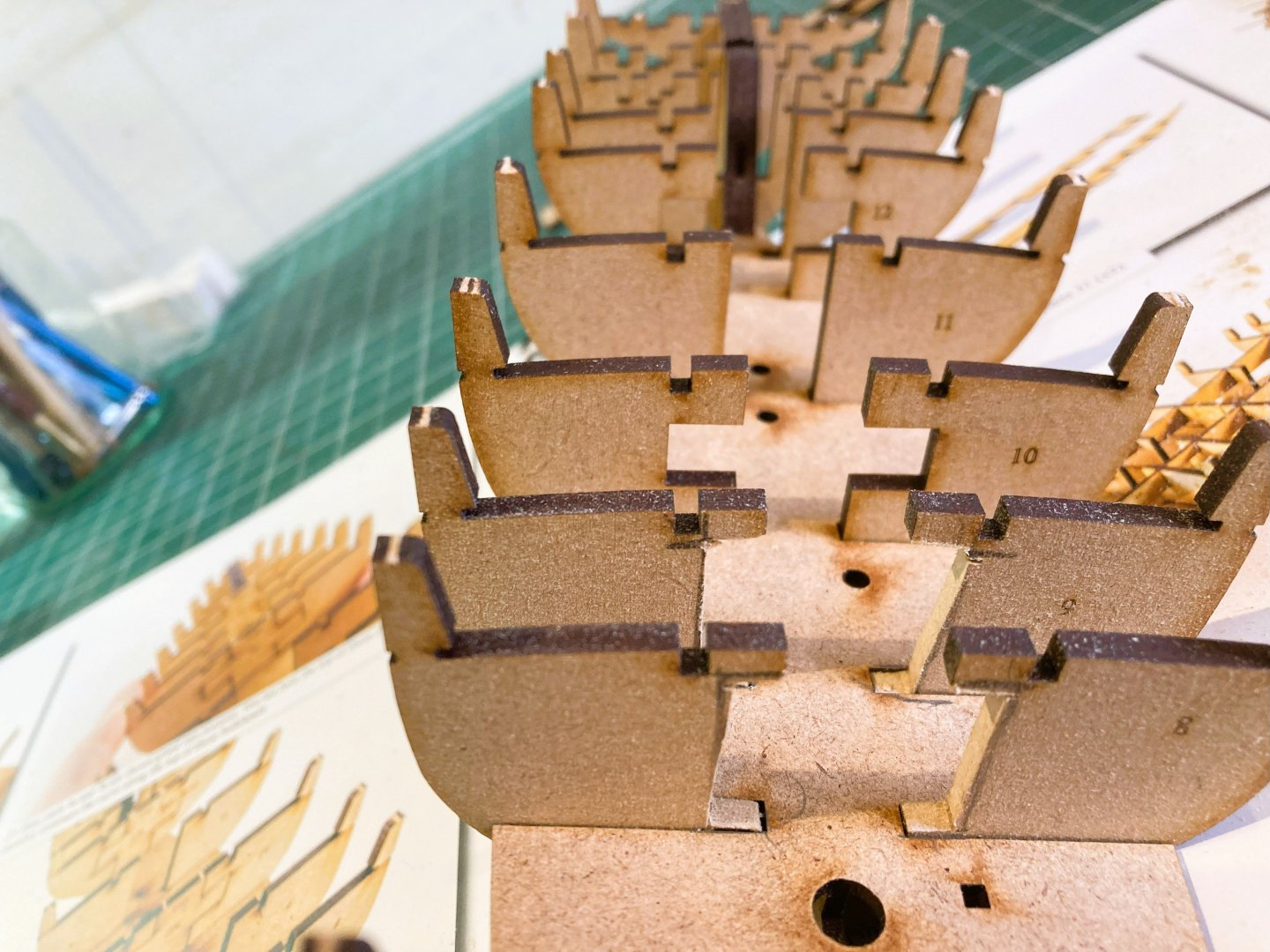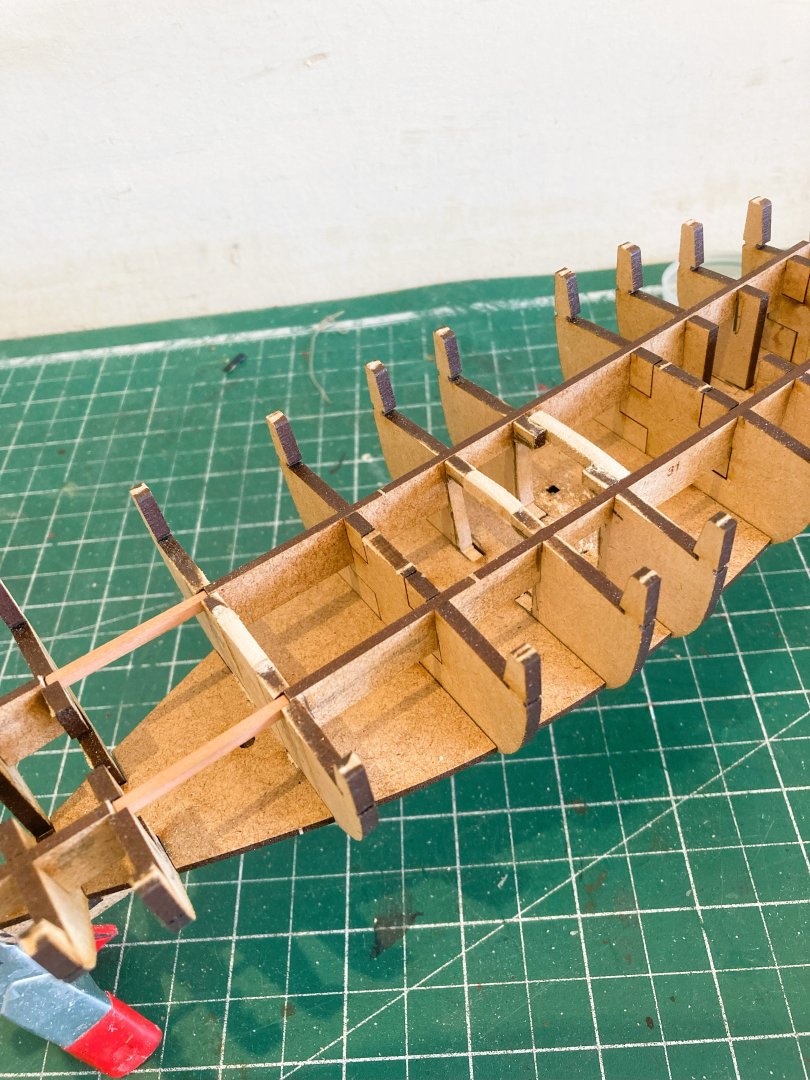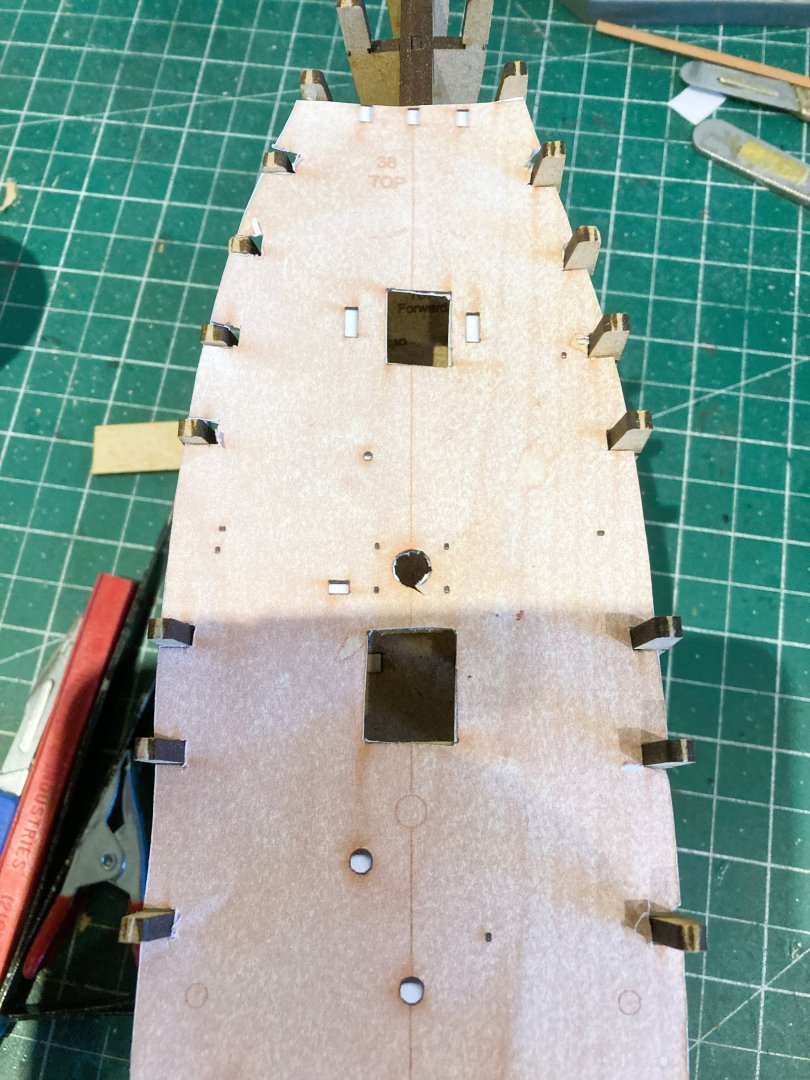-
Posts
4,564 -
Joined
-
Last visited
About Blue Ensign

Profile Information
-
Gender
Male
-
Location
The Green Shires of England
-
Interests
Eighteenth Century Naval History, ship modelling, wandering the Lakeland Fells, cocker spaniels, Golf, and too keen an interest in red wine.
Recent Profile Visitors
-
NW Ship Builder started following Blue Ensign
-
 KARAVOKIRIS reacted to a post in a topic:
HMS Harpy 1796 by Blue Ensign – FINISHED - Vanguard Models - 1:64 scale
KARAVOKIRIS reacted to a post in a topic:
HMS Harpy 1796 by Blue Ensign – FINISHED - Vanguard Models - 1:64 scale
-
 Mark P reacted to a post in a topic:
Blocks, cannons and ships boats
Mark P reacted to a post in a topic:
Blocks, cannons and ships boats
-
 catopower reacted to a post in a topic:
Copper plate overlapping (< > 1794) - lower overlaps upper or vice versa?
catopower reacted to a post in a topic:
Copper plate overlapping (< > 1794) - lower overlaps upper or vice versa?
-
 Tumblehome reacted to a post in a topic:
Conway Anatomy of the Ship series. A discussion.
Tumblehome reacted to a post in a topic:
Conway Anatomy of the Ship series. A discussion.
-
 Taken Aback reacted to a post in a topic:
HMS Sphinx 1775 by Blue Ensign - FINISHED - Vanguard Models - 1:64 scale
Taken Aback reacted to a post in a topic:
HMS Sphinx 1775 by Blue Ensign - FINISHED - Vanguard Models - 1:64 scale
-
Taken Aback started following Blue Ensign
-
 spud1 reacted to a post in a topic:
HMS Pegasus by Blue Ensign - FINISHED - Amati/Victory Models - 1:64 scale
spud1 reacted to a post in a topic:
HMS Pegasus by Blue Ensign - FINISHED - Amati/Victory Models - 1:64 scale
-
 thibaultron reacted to a post in a topic:
Blocks, cannons and ships boats
thibaultron reacted to a post in a topic:
Blocks, cannons and ships boats
-
 VolkerB reacted to a post in a topic:
HMS Sphinx 1775 by Blue Ensign - FINISHED - Vanguard Models - 1:64 scale
VolkerB reacted to a post in a topic:
HMS Sphinx 1775 by Blue Ensign - FINISHED - Vanguard Models - 1:64 scale
-
 En-Dan reacted to a post in a topic:
HMS Sphinx 1775 by Blue Ensign - FINISHED - Vanguard Models - 1:64 scale
En-Dan reacted to a post in a topic:
HMS Sphinx 1775 by Blue Ensign - FINISHED - Vanguard Models - 1:64 scale
-
 ccoyle reacted to a post in a topic:
Erycina 1882 by Blue Ensign - Vanguard Models - 1:64 scale - Plymouth Trawler
ccoyle reacted to a post in a topic:
Erycina 1882 by Blue Ensign - Vanguard Models - 1:64 scale - Plymouth Trawler
-
Sterling59 started following Blue Ensign
-
She looks a fine model fully rigged Glenn, well done. Too nice not to be on display. B.E.
- 241 replies
-
- Vanguarrd Models
- Harpy
-
(and 1 more)
Tagged with:
-
 Blue Ensign reacted to a post in a topic:
HMS Harpy 1796 by Glenn-UK – FINISHED - Vanguard Models - 1:64 scale
Blue Ensign reacted to a post in a topic:
HMS Harpy 1796 by Glenn-UK – FINISHED - Vanguard Models - 1:64 scale
-
 Blue Ensign reacted to a post in a topic:
HMS Pegasus 1776 by Knocklouder - FINISHED - Amati/Victory Models - 1:64
Blue Ensign reacted to a post in a topic:
HMS Pegasus 1776 by Knocklouder - FINISHED - Amati/Victory Models - 1:64
-
 Blue Ensign reacted to a post in a topic:
HMS Pegasus 1776 by Knocklouder - FINISHED - Amati/Victory Models - 1:64
Blue Ensign reacted to a post in a topic:
HMS Pegasus 1776 by Knocklouder - FINISHED - Amati/Victory Models - 1:64
-
Post 5 Fitting the Bulwarks. As is usual with Vanguard kits the bulwarks come in two sections (Fore and aft) of 1mm Pearwood strip. They are marked on the interior with the frame positions and a useful fitting line which sits level with the deck line. 5623a I dry fit them and use heat to reduce the spring before gluing and pinning. 5650a 5652a Glue is not applied to the bulkhead extensions which are later removed. The stern counter frames require fairing to allow the counter pattern to fit cleanly across all frames. 5634a The counter pattern is wetted before clamping to the frames for better conformation and allowed to dry out. This can be speeded up by applying heat. 5642a 5645a With the bulwarks and counter in place the stern timbers are better secured against accidental damage. B.E. 06/09/2025
-
Post 4 Fairing and fittings A stove for Erycina It is certain that a small stove was contained within the cabin of Erycina but the kit only shows the Flue pipe emerging above deck. 5585a Before I begin fairing I knocked up a small stove to check the fit and position for the line of the flue pipe. It is a tiny thing measuring only 12mm x 6mm. 5593a The main objective is to see how it looks in the cabin position. 5595a I think it will pass muster, at least to a blind man on a galloping horse. Fairing is straightforward on Erycina, it’s nice to have a hull that will fit in one hand to work on. 5600a 5604a A careful check is made to ensure that a test board will fit tightly against the deck edge and bulkhead ears. 5607a 5608a Similarly, all points of the faired bulkhead edges are checked using a test board to ensure full contact down to the keel. 5612a 5616a 5620a The final stage of this section is the addition of the Pearwood keel, Bow and sternpost parts. They all slot perfectly together into the false keel. B.E. 03/09/2025
-
 Blue Ensign reacted to a post in a topic:
Erycina 1882 by Blue Ensign - Vanguard Models - 1:64 scale - Plymouth Trawler
Blue Ensign reacted to a post in a topic:
Erycina 1882 by Blue Ensign - Vanguard Models - 1:64 scale - Plymouth Trawler
-
Post 3 Stern timber frames These are the long and vulnerable mdf stern timbers that set alarm bell ringing in my ears. Great care is required not to stress or knock in the early build stages; repairs could prove tricky. 5572a I found that careful sanding of the slots, and trial fitting was required to achieve a firm but not overtight fit which may have created difficulty if subsequent removal was necessary. 5573a Fitting support pieces between the timbers is advisable. I use styrene foam pieces which are ideal. Once the bulwarks are fitted this area becomes less at risk. 5567a 5569a This is now the time to fit the ply sub-deck which will secure the bulkheads from lateral flex during fairing. Another testy little exercise. 5580a The deck is taped square on the cutting mat to mark and remove the section above the cabin, a margin is allowed for some final trimming. 5582a The bulkhead slots are tested for ease of fitment and having fully inserted the deck into the port side slots I work along the starboard side from fore to aft individually flexing and pressing the deck into place at each slot. 5584a There is always fear of breaking something with this exercise, but firm and steady pressure get the job done. I was pleased to see that the deck sits tight against the bulkheads and stern timbers, no pressure necessary to hold the deck down. The hull is now rock steady for the fairing process to begin. B.E. 01/09/2025
-
Hi Chris, I tend to choose kits where I have additional information; in the case of Erycina I have the internal layouts drawn by Edgar March, and a wealth of given sizes and rigging detail, contained in his book Sailing Trawlers. I used his companion book Sailing Drifters when I converted the Zulu kit to Muirneag. I then look at the kit and decide where I can enhance the detail which often develops organically. I do draw things out to scale where needed, and with deck cut-outs I use copies of the kit decks to work the final arrangement. I suppose after many years of messing around with kits I have the confidence to chop them around, but this is becoming increasingly less necessary with Vanguard kits as Chris develops more and more lower deck detail and associated fittings. Regards, B.E.
-
Thankyou Trevor, makes a lot of sense.👍 Post 2 Stern cabin area My idea is to fit out the cabin, certainly with the iron stove which will connect to the flue pipe emerging thro’ the deck, and maybe with other fittings as space allows. A section of deck will be left unplanked above the cabin. Modifying the cabin area is tricky, partly because work on Bulkhead 12 is more extensive, and because it proved too difficult to remove for shaping without risking damage and therefore had to be modified insitu. The filler pieces between the bulkheads prevented removal. Bulkhead 11 is closed off as this forms the partition between the cabin and the Boiler room. Bulkhead 12 bears the brunt of modification with large sections removed to create frames and beams. Tricky to get at to shape and sand. 5552a In this area the longitudinal bracing patterns are removed and replaced with Pear carlings. 5553a Bulkhead 11 is boarded using Boxwood strip and Whitewashed. A doorway leads to the Boiler room and the door is created from Boxwood strip and decorated with Syren hinges and Handle. 5554a 5557a The cabin deck area is planked with Boxwood strip. 5559a Similarly, the Fish hold is decked out using Boxwood strip. 5565a A paper deck print is used to determine the viewable area. Still work in progress, but you get the idea. B.E. 31/08/2025
-
 Blue Ensign reacted to a post in a topic:
Erycina 1882 by Blue Ensign - Vanguard Models - 1:64 scale - Plymouth Trawler
Blue Ensign reacted to a post in a topic:
Erycina 1882 by Blue Ensign - Vanguard Models - 1:64 scale - Plymouth Trawler
-
 Blue Ensign reacted to a post in a topic:
Erycina 1882 by Blue Ensign - Vanguard Models - 1:64 scale - Plymouth Trawler
Blue Ensign reacted to a post in a topic:
Erycina 1882 by Blue Ensign - Vanguard Models - 1:64 scale - Plymouth Trawler
-
Post One Early stages The early stages of construction are just as we have come to expect from Vanguard. 5534a Rapid early progress with glueless assembly of perfectly fitting parts. That is unless you decide to open up the lower deck areas of the Fish hold and the cabin space. 5537a This involves some modification to the Bulkheads 8 and 9 ( in the case of the fish hold, and Bulkheads 12 and 13 in the case of the cabin area. 5539a 5540a Bulkheads 8 and 9 modified to give a clear space below the Main Hatch to the Fish hold. 5547a Faux deck beams are added but won’t be seen. 5548a I was quite surprised by the small main hatch on Erycina, Barely 3’ 6”(L) X 3’.0 (W). Seems hardly practical on a fishing boat, and miniscule compared to the cavernous hatchways on the Fifie and Zulu boats. She is however, quite a bit smaller than either Fifie or Zulu. I do like to have some open hatchways, gives depth to a model and at least an impression of more there than there is. The next stage is modifying the Cabin area. B.E. 30/08/2024
-
I can't see much difference in terms of construction between Zulu, which I built as Muirneag, and the Erycina; both have two masts and similar hull shapes. Erycina has shrouds and ratlines, and a slightly more complex sail arrangement, which possibly accounts for the different Vanguard rating. They are both excellent subjects for those new to ship modelling, and make very attractive models. You are doing a fine job with your Ranger build. 👍 B.E.
-
Erycina - Ketch rigged Plymouth Trawler 1882. I’ve had this kit for a while, and with nothing specific in the immediate offing it will give me hopefully a no stress easy build of this pretty little fishing vessel to complement my Fifie and Zulu builds. I was attracted to this boat by its sleek lines and interesting sail plan. Given the open deck and Fore and aft rigging it will be fairly easy to clean, and casing will not be required. It is also a model that will fit in a fairly small space. My interest is also piqued given additional detailing for Erycina is provided in the book Sailing Trawlers by Edgar J. March I can see an opportunity to indulge myself with a little off-piste detailing work. On with the show. B.E. 27/08/2025
-
 Blue Ensign reacted to a post in a topic:
Chris Watton and Vanguard Models news and updates Volume 2
Blue Ensign reacted to a post in a topic:
Chris Watton and Vanguard Models news and updates Volume 2
-
Thanks Chris, I can now see where the idea of a cill fixed carronade bed came from - Marquardt's drawings in the Frigate Surprise book. This was a bit of a 'surprise ' to me, as the only versions I recalled seeing are the 'inboard' and 'outboard' variants. Presumably you have tested a PolyBak structure is sufficiently robust to stand the odd inadvertent knock? Cheers, B.E.
-
 Blue Ensign reacted to a post in a topic:
Chris Watton and Vanguard Models news and updates Volume 2
Blue Ensign reacted to a post in a topic:
Chris Watton and Vanguard Models news and updates Volume 2
-
 Blue Ensign reacted to a post in a topic:
Chris Watton and Vanguard Models news and updates Volume 2
Blue Ensign reacted to a post in a topic:
Chris Watton and Vanguard Models news and updates Volume 2
-
 Blue Ensign reacted to a post in a topic:
Chris Watton and Vanguard Models news and updates Volume 2
Blue Ensign reacted to a post in a topic:
Chris Watton and Vanguard Models news and updates Volume 2
About us
Modelshipworld - Advancing Ship Modeling through Research
SSL Secured
Your security is important for us so this Website is SSL-Secured
NRG Mailing Address
Nautical Research Guild
237 South Lincoln Street
Westmont IL, 60559-1917
Model Ship World ® and the MSW logo are Registered Trademarks, and belong to the Nautical Research Guild (United States Patent and Trademark Office: No. 6,929,264 & No. 6,929,274, registered Dec. 20, 2022)
Helpful Links
About the NRG
If you enjoy building ship models that are historically accurate as well as beautiful, then The Nautical Research Guild (NRG) is just right for you.
The Guild is a non-profit educational organization whose mission is to “Advance Ship Modeling Through Research”. We provide support to our members in their efforts to raise the quality of their model ships.
The Nautical Research Guild has published our world-renowned quarterly magazine, The Nautical Research Journal, since 1955. The pages of the Journal are full of articles by accomplished ship modelers who show you how they create those exquisite details on their models, and by maritime historians who show you the correct details to build. The Journal is available in both print and digital editions. Go to the NRG web site (www.thenrg.org) to download a complimentary digital copy of the Journal. The NRG also publishes plan sets, books and compilations of back issues of the Journal and the former Ships in Scale and Model Ship Builder magazines.



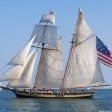
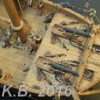
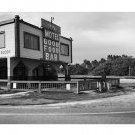
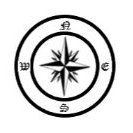

.thumb.jpg.62d1d69fed1f32364417cb1f9cdeb009.jpg)

